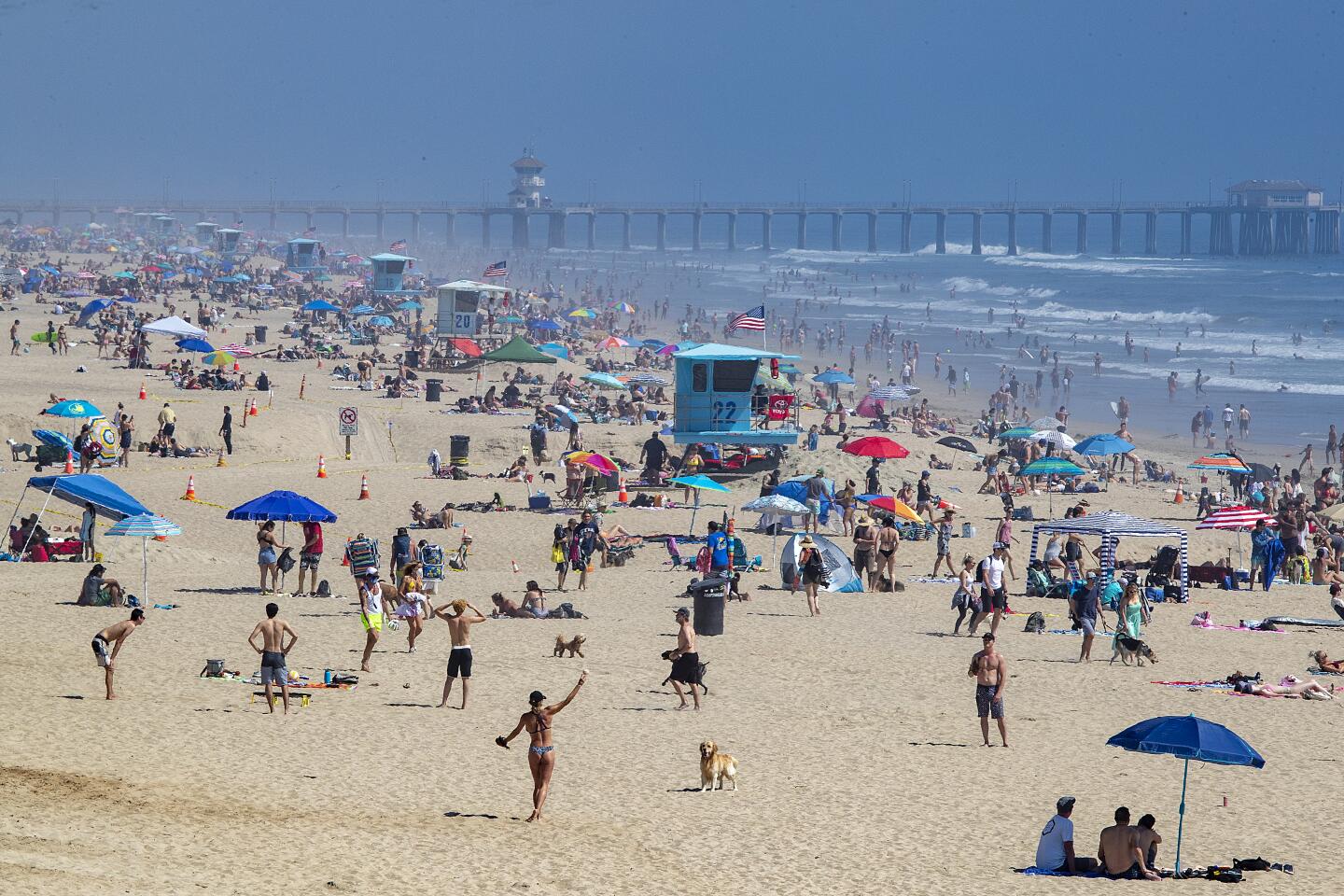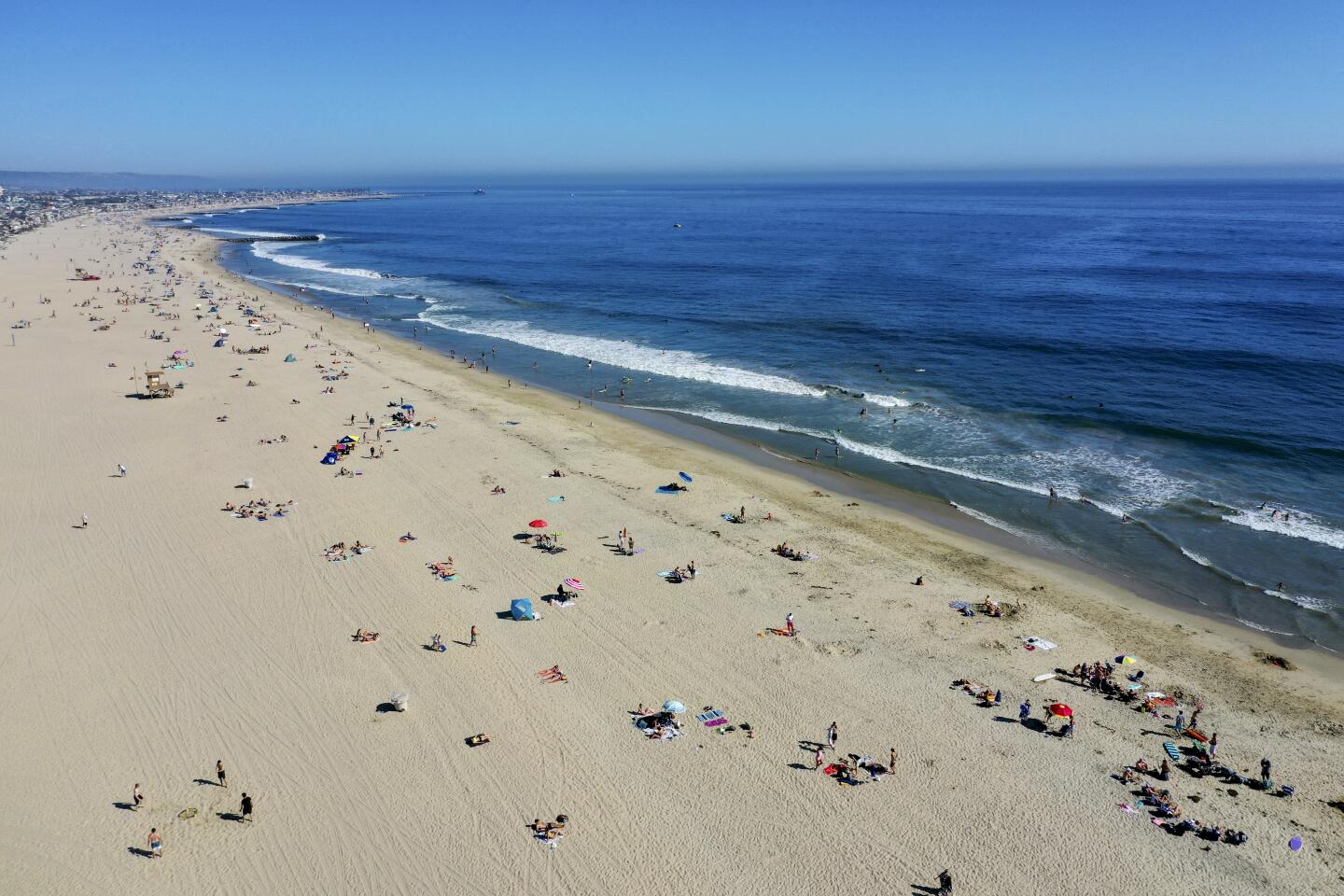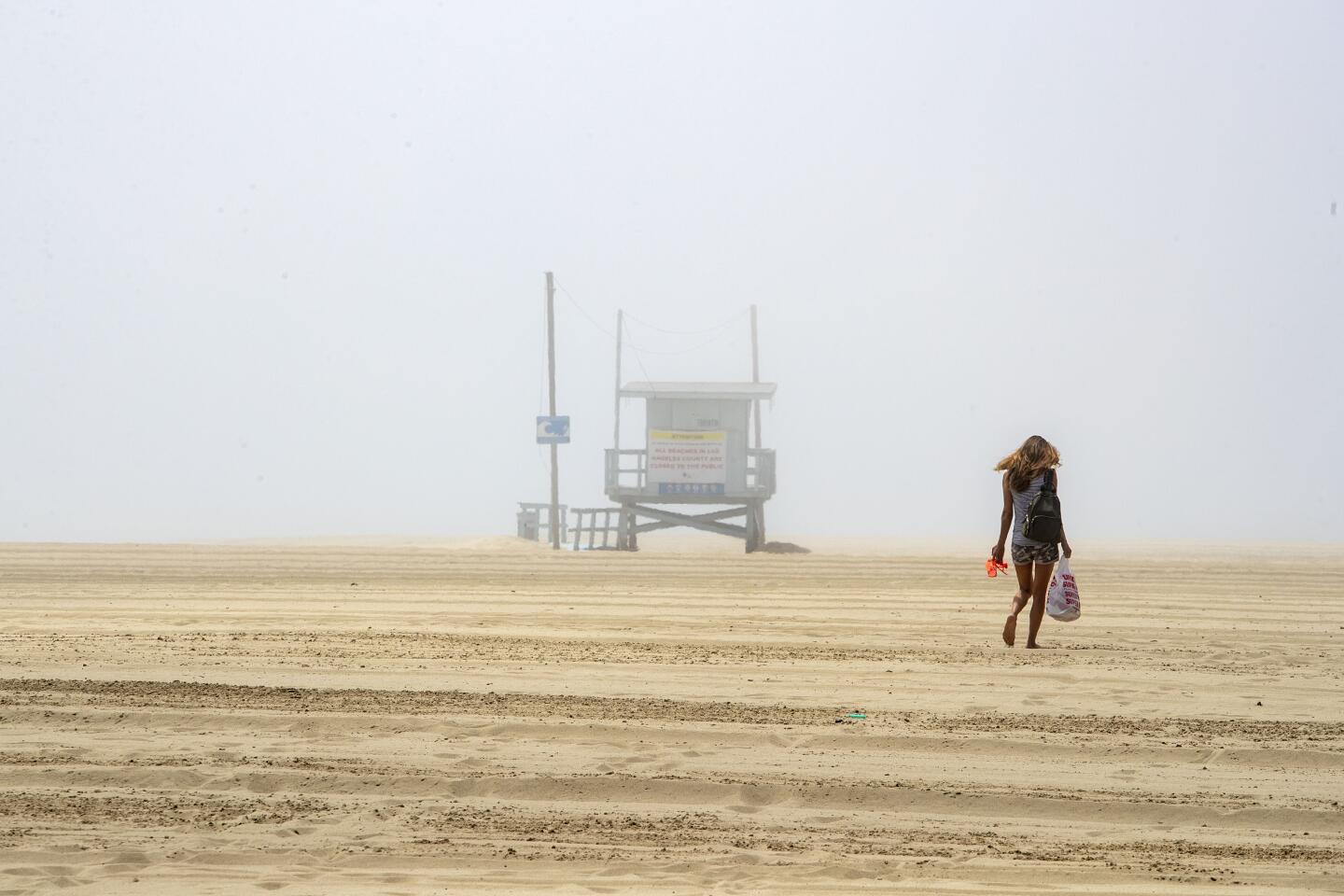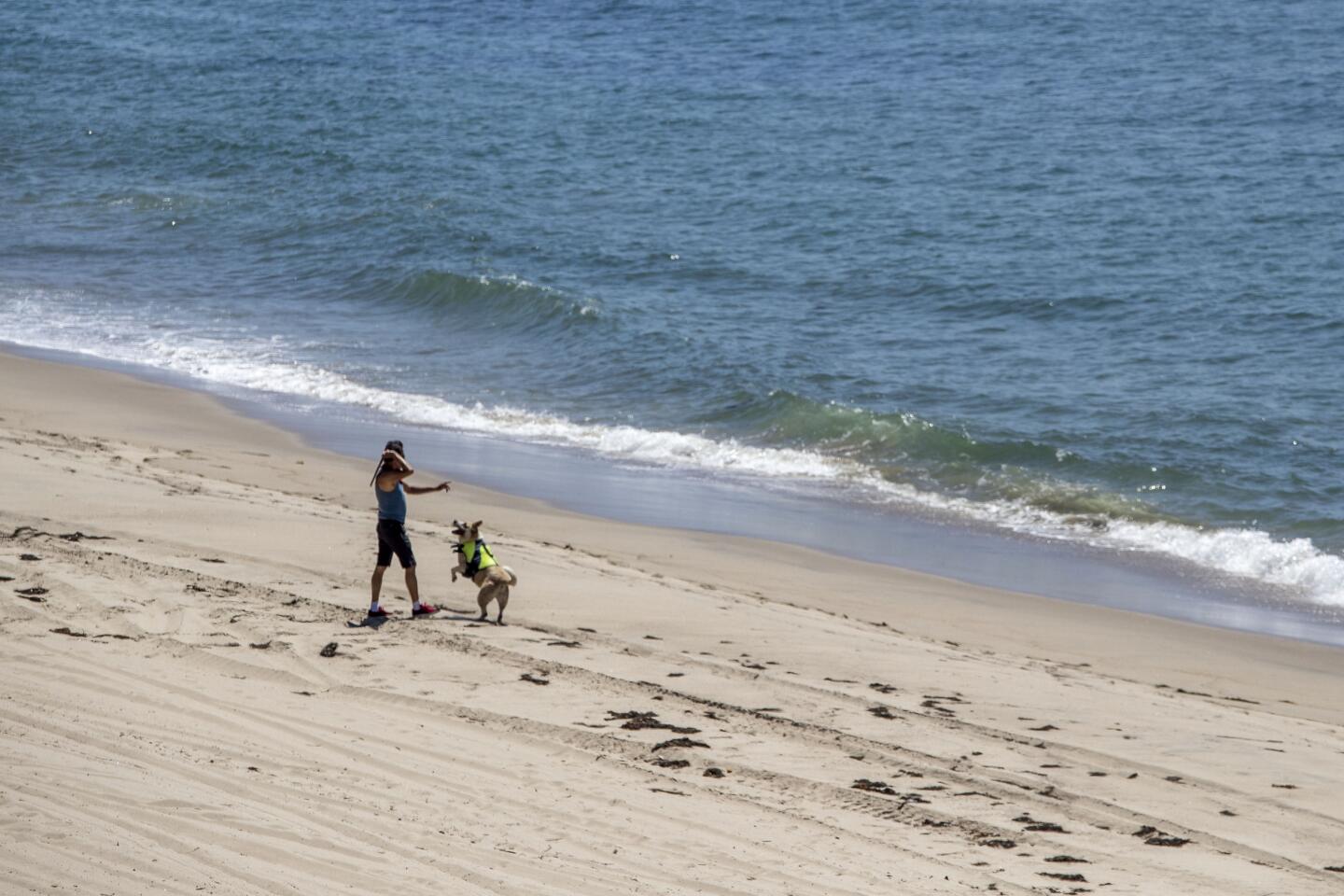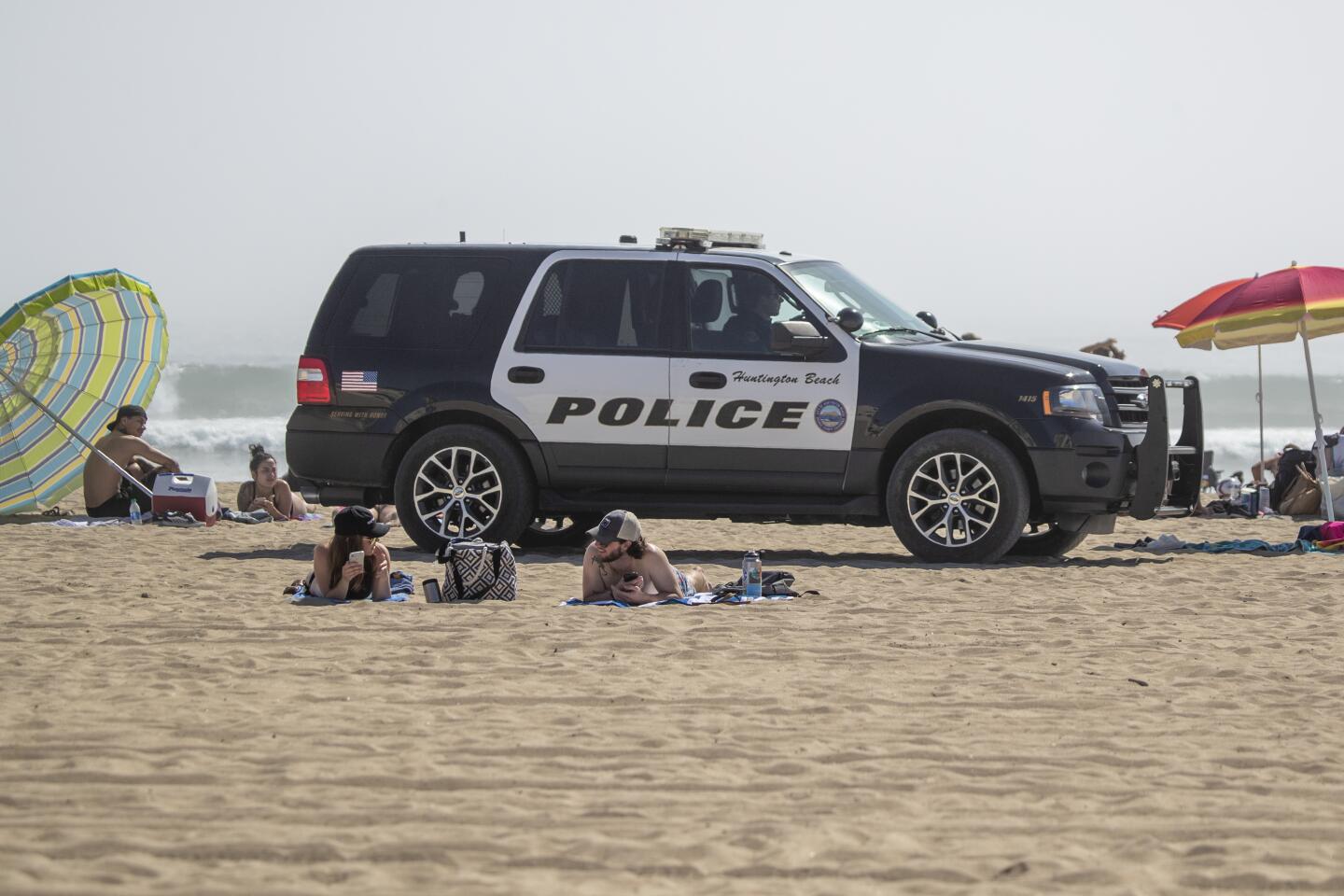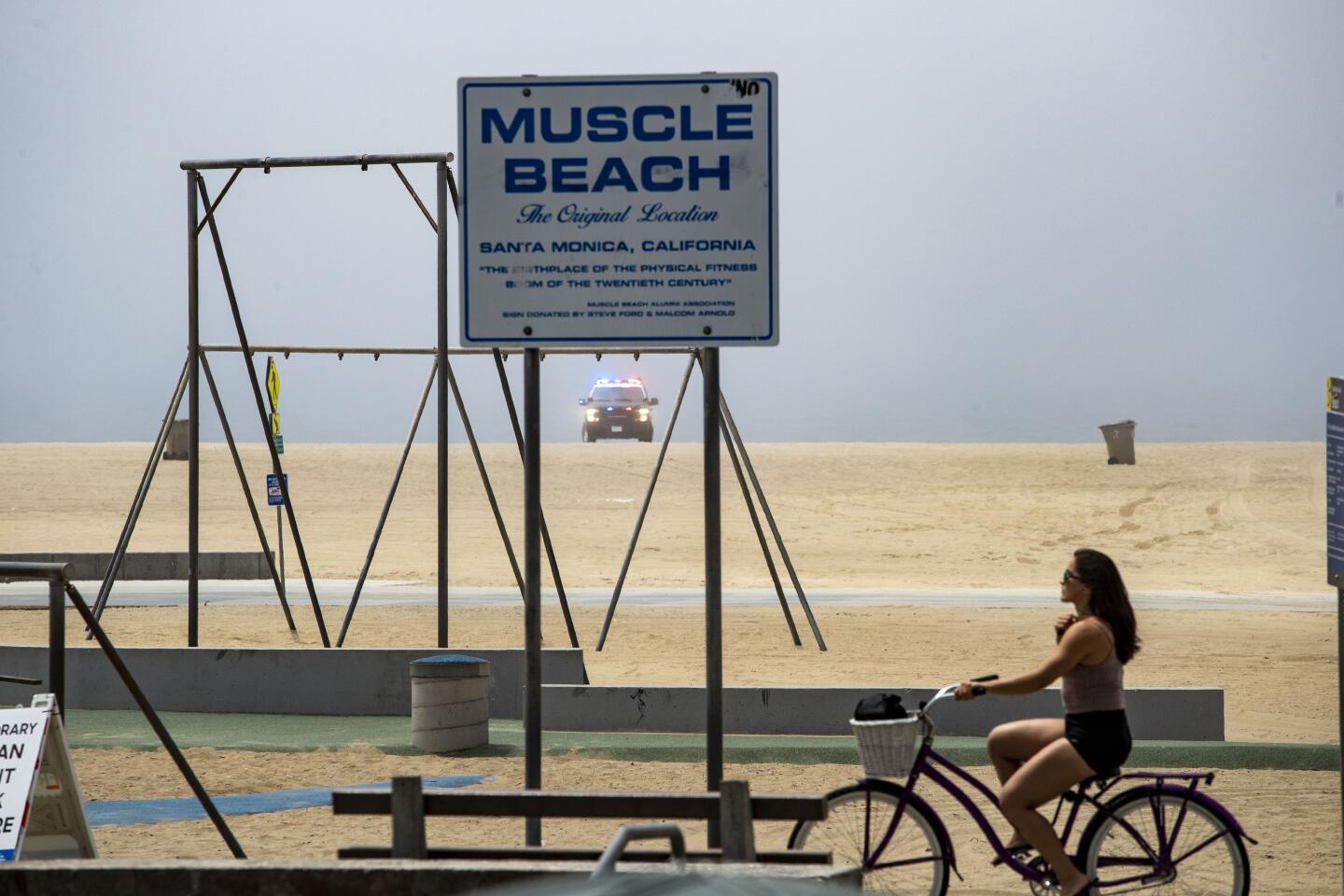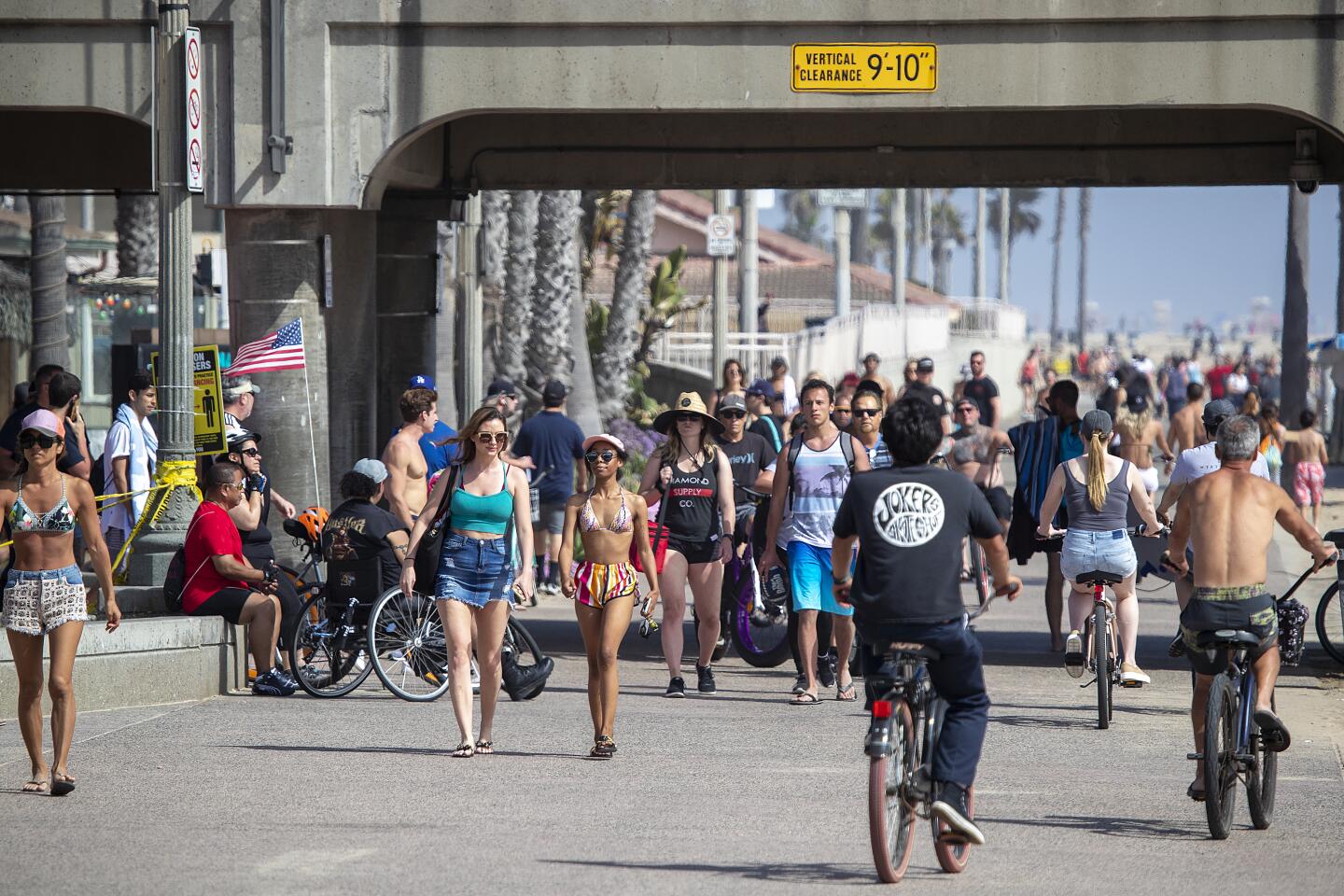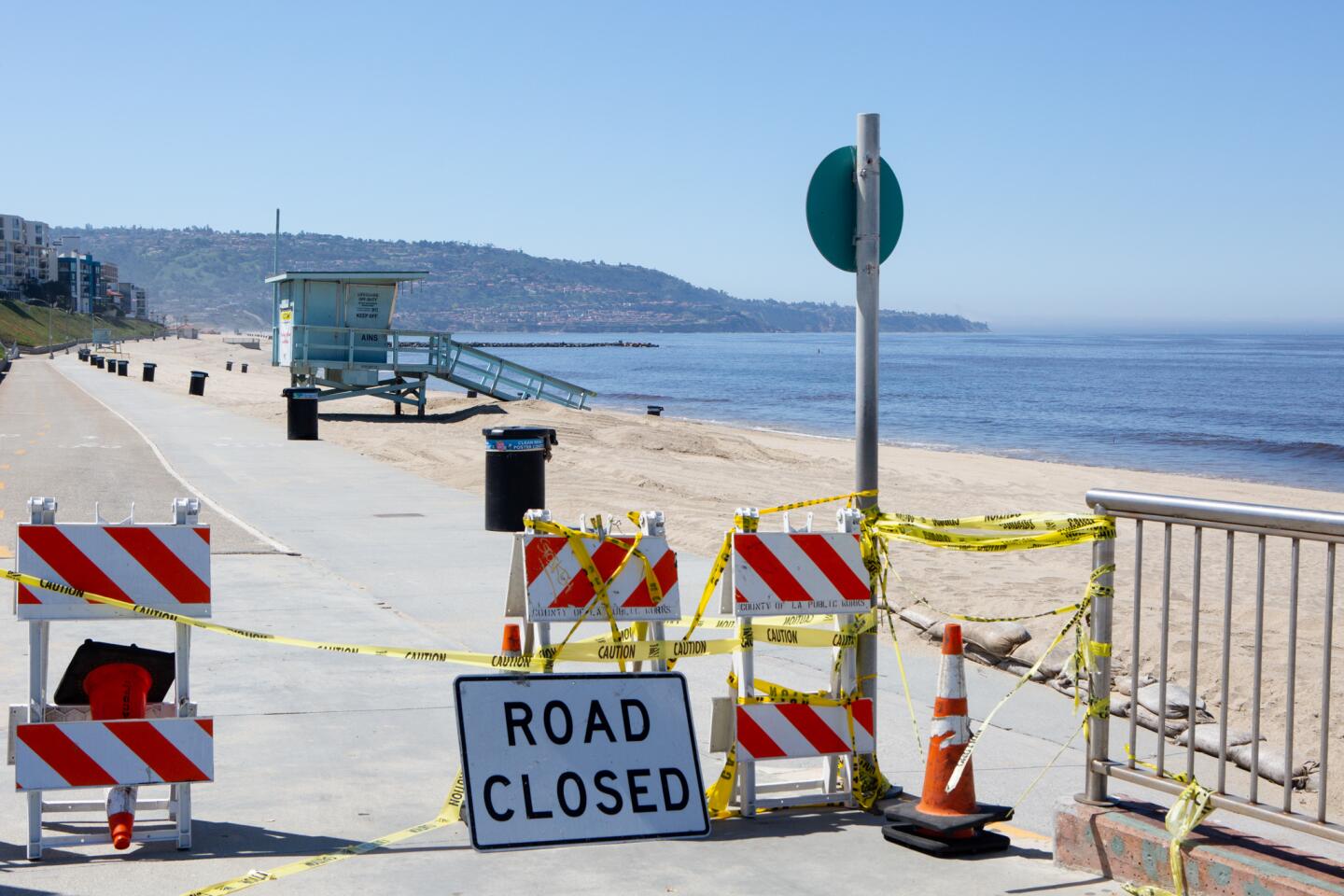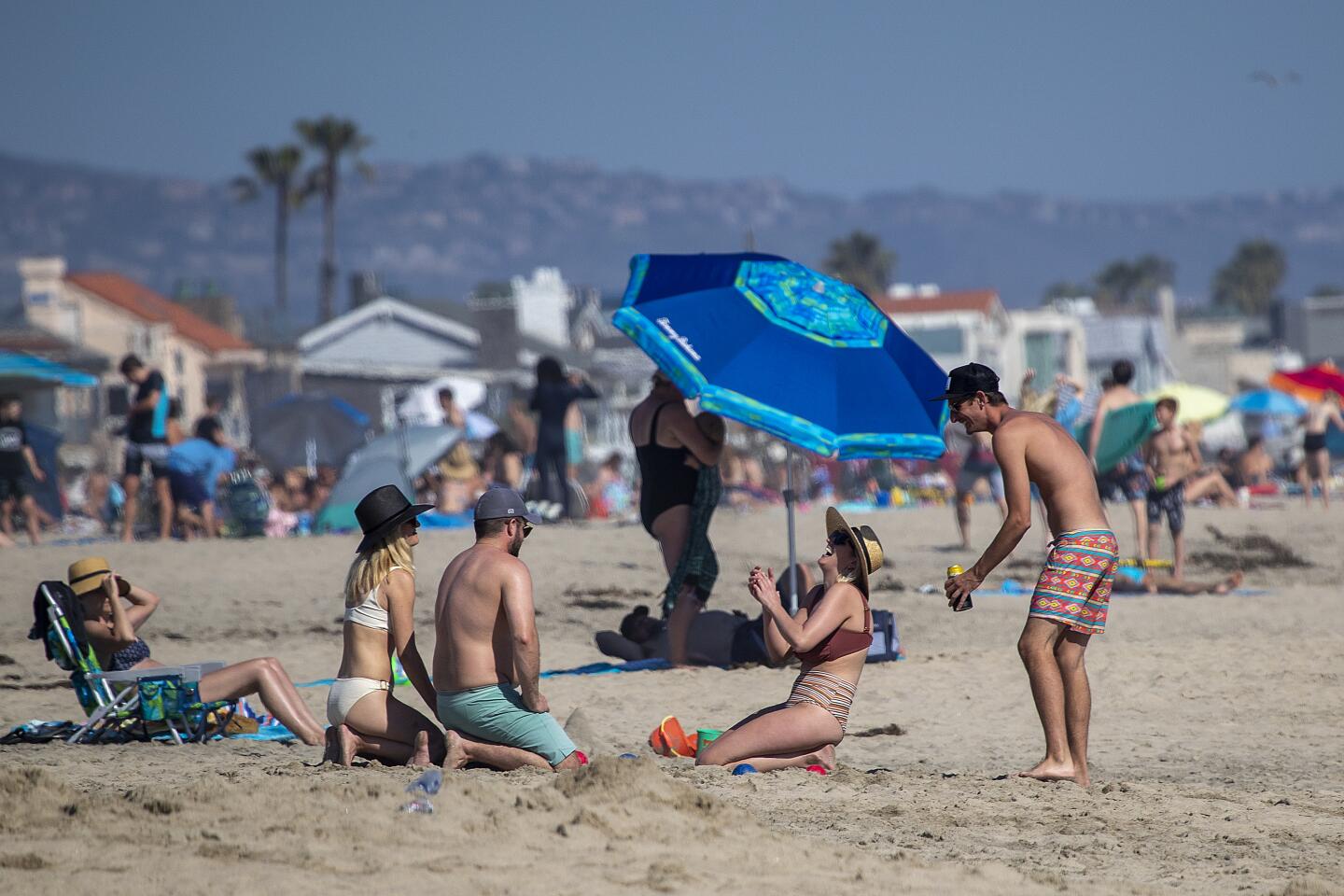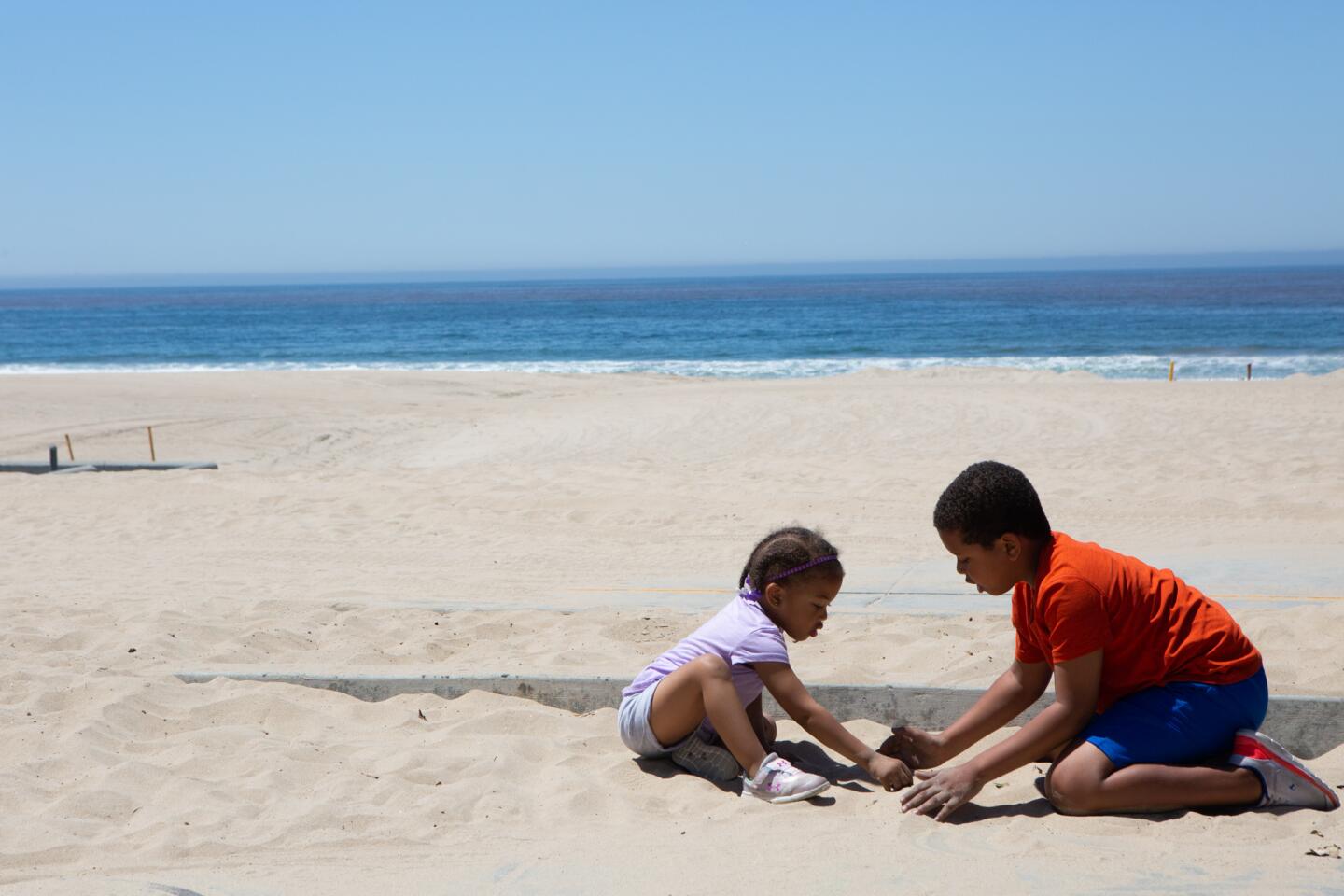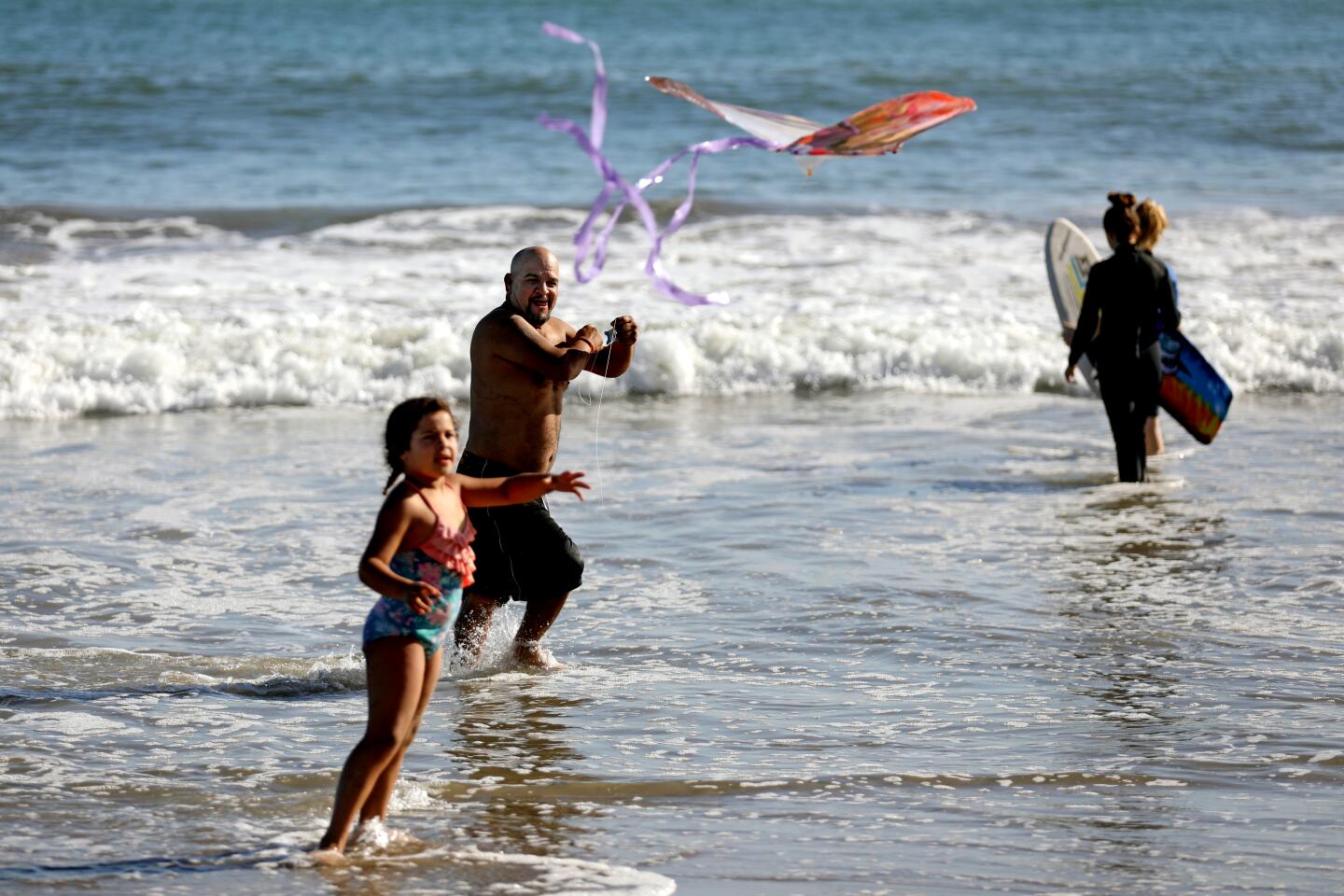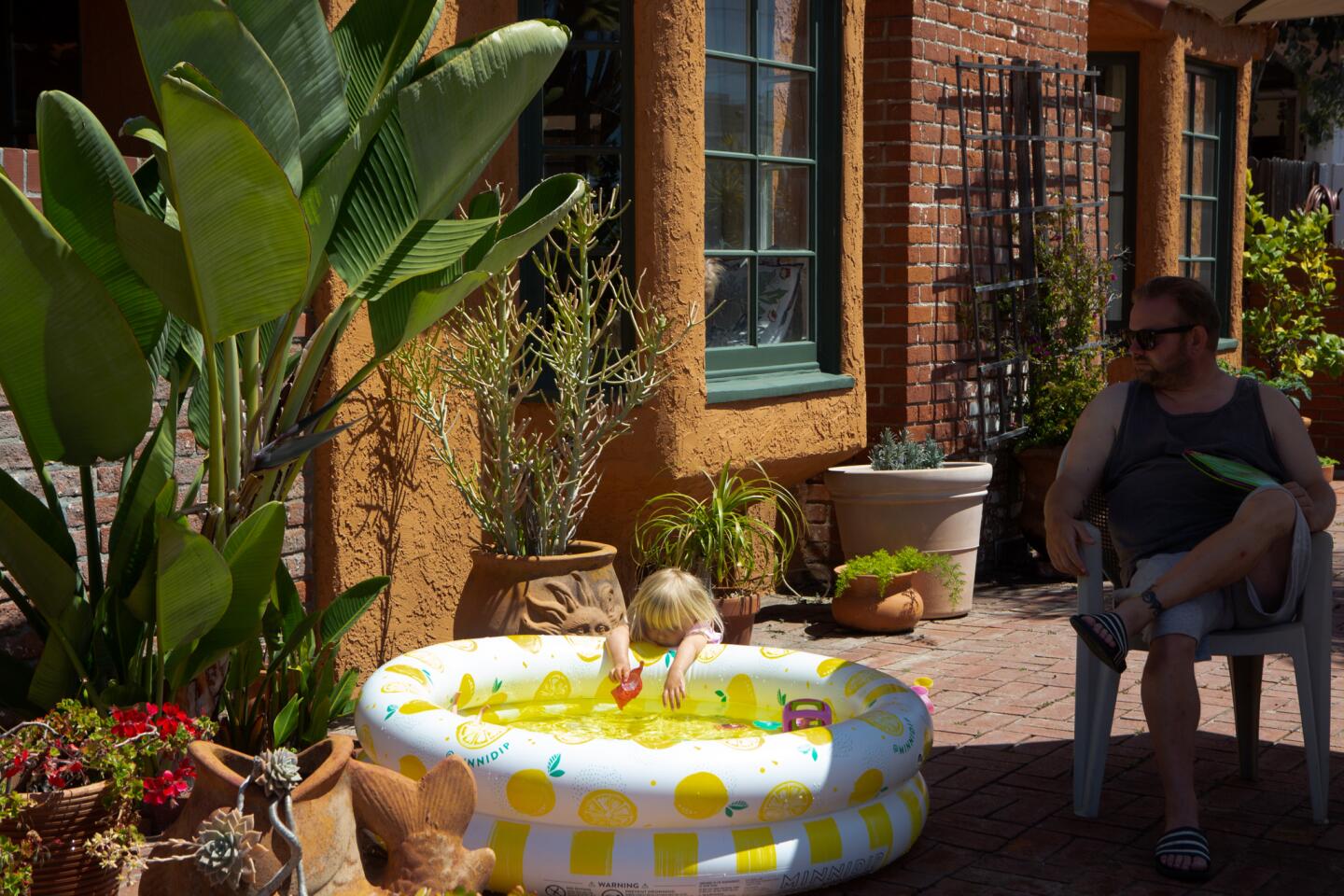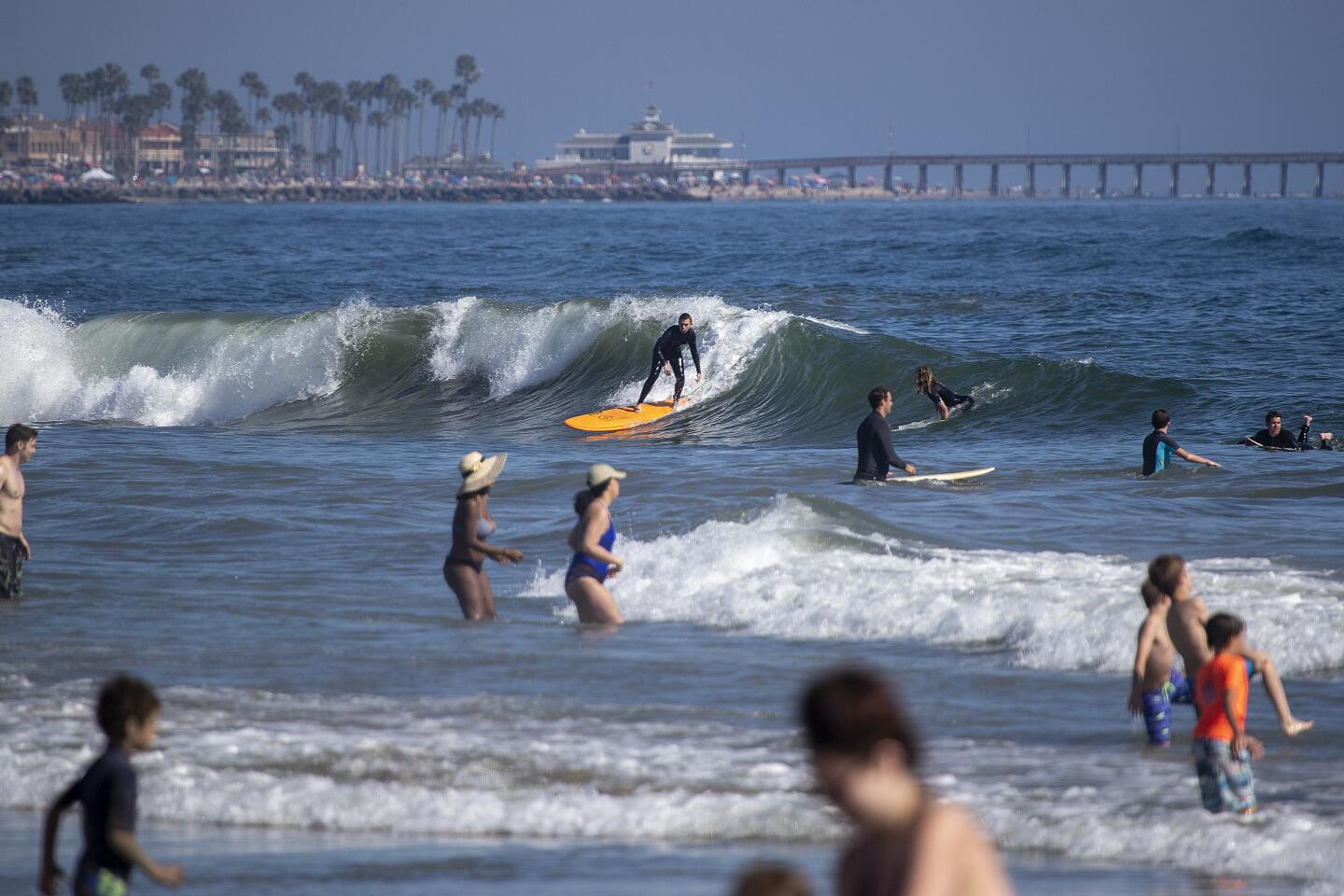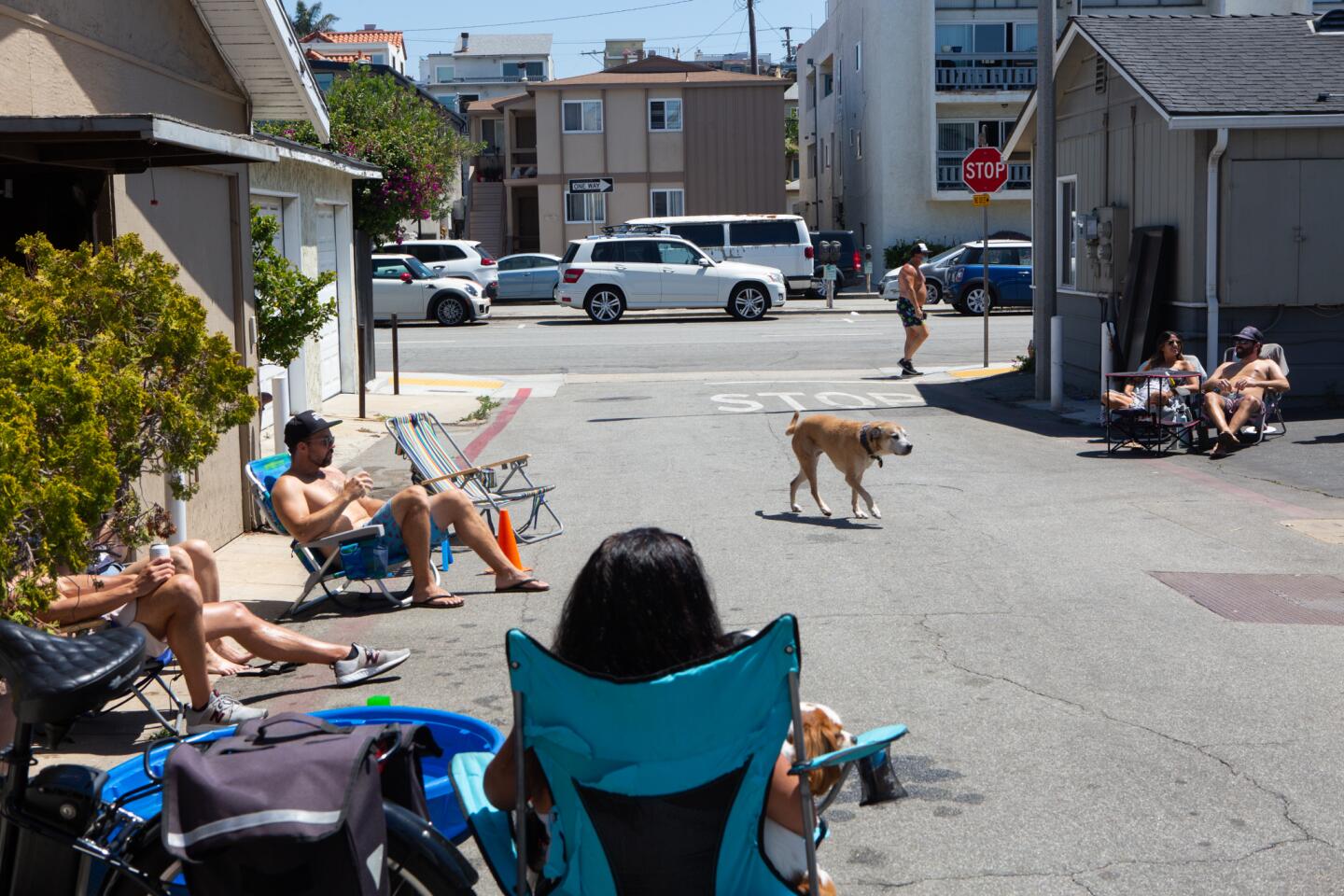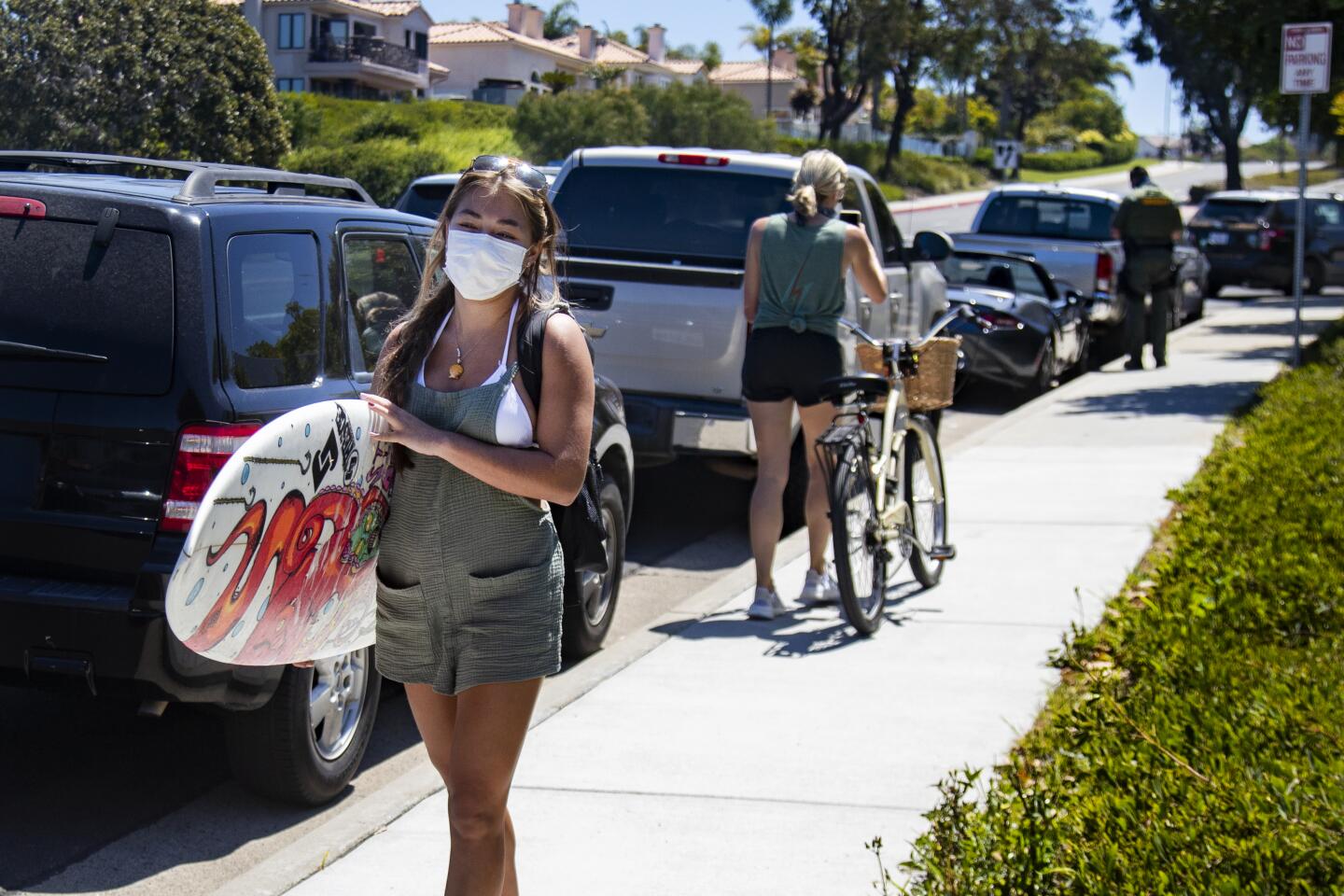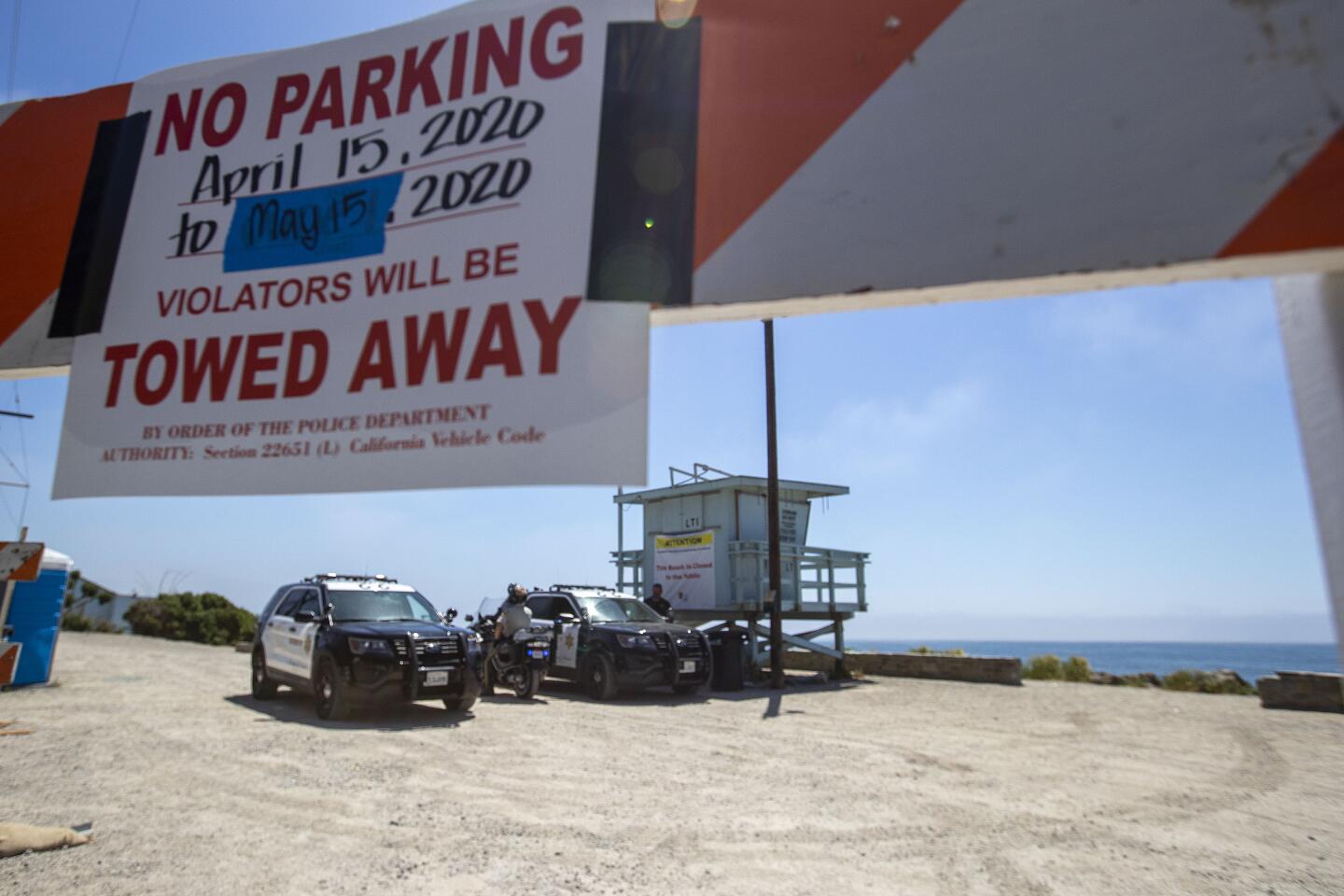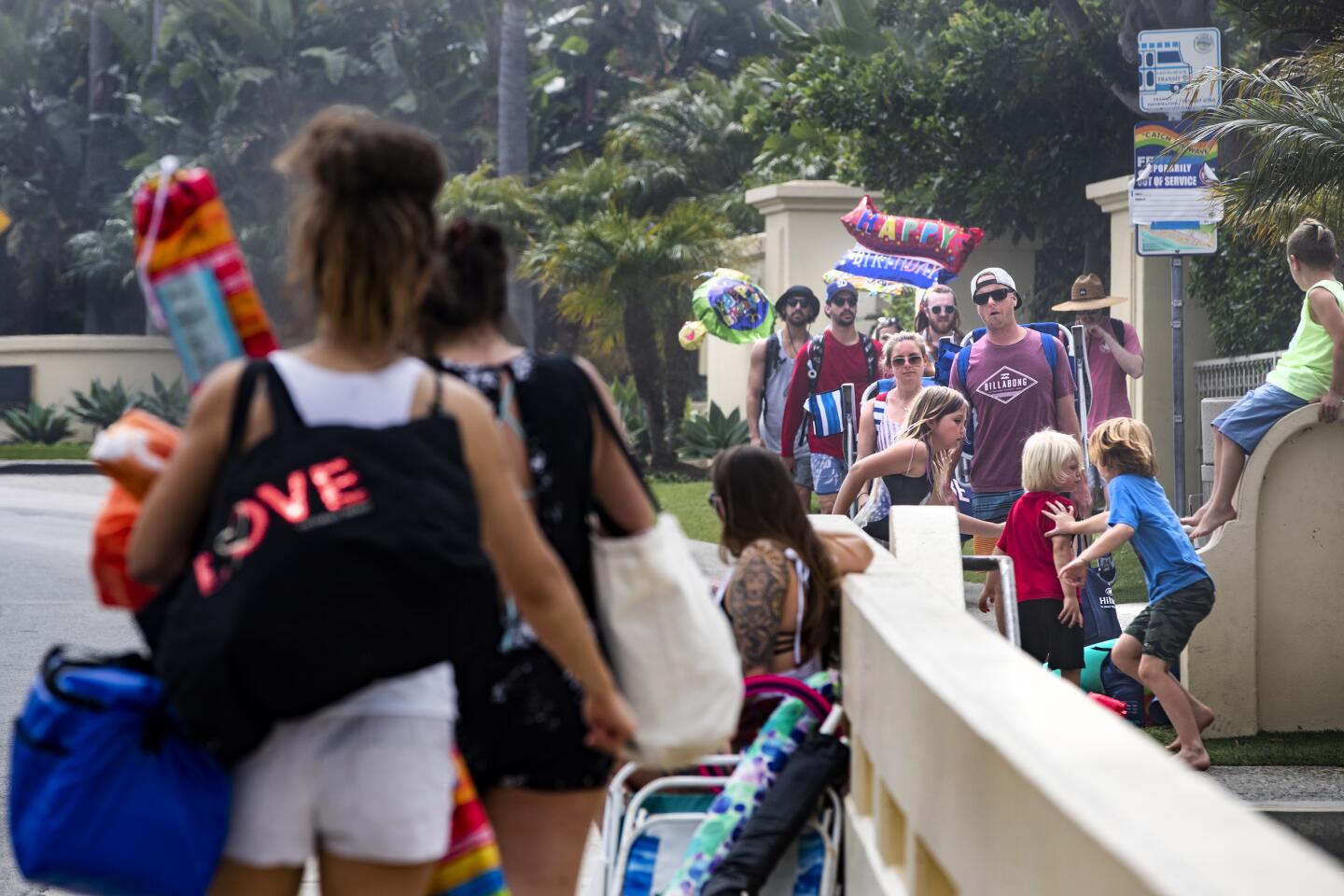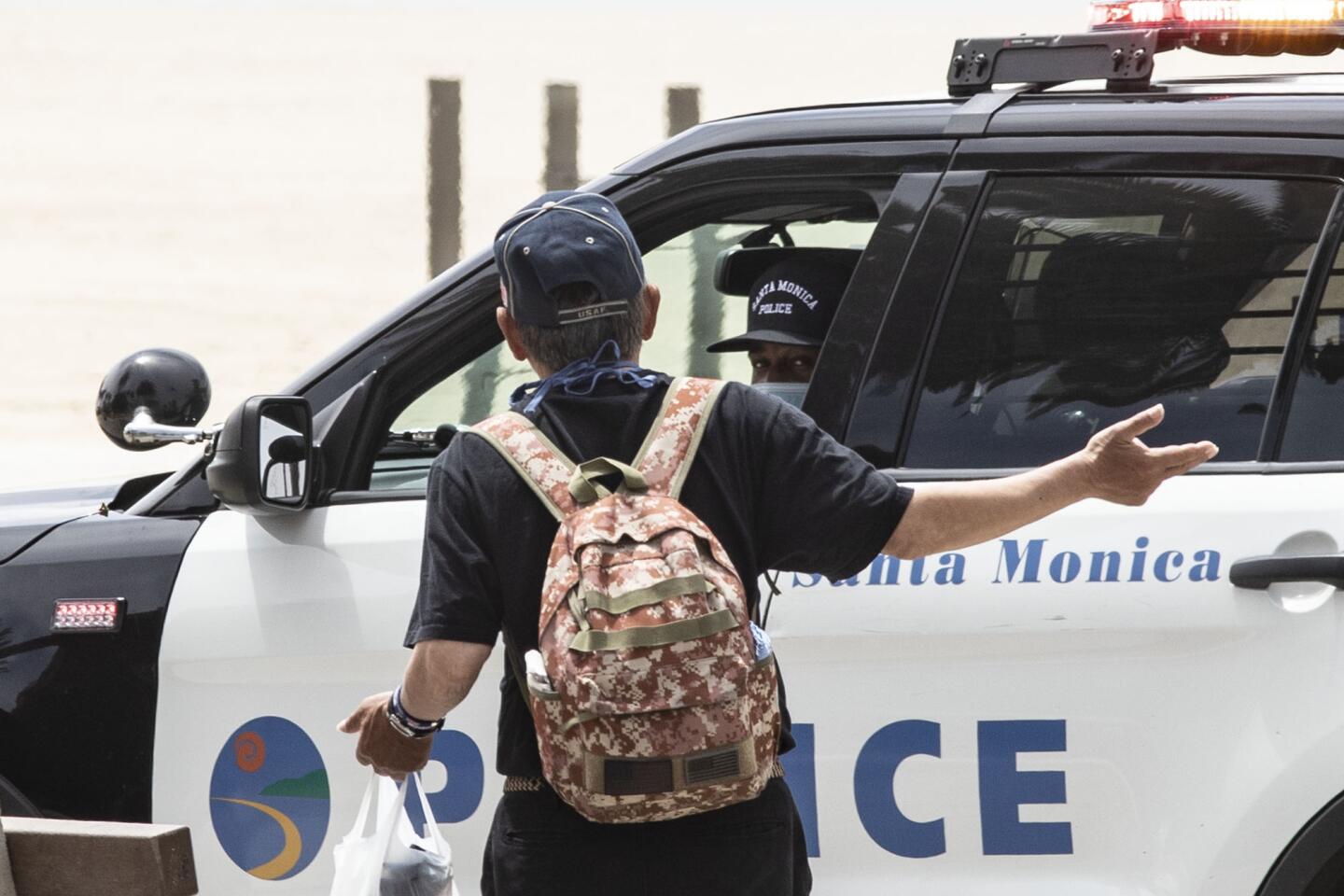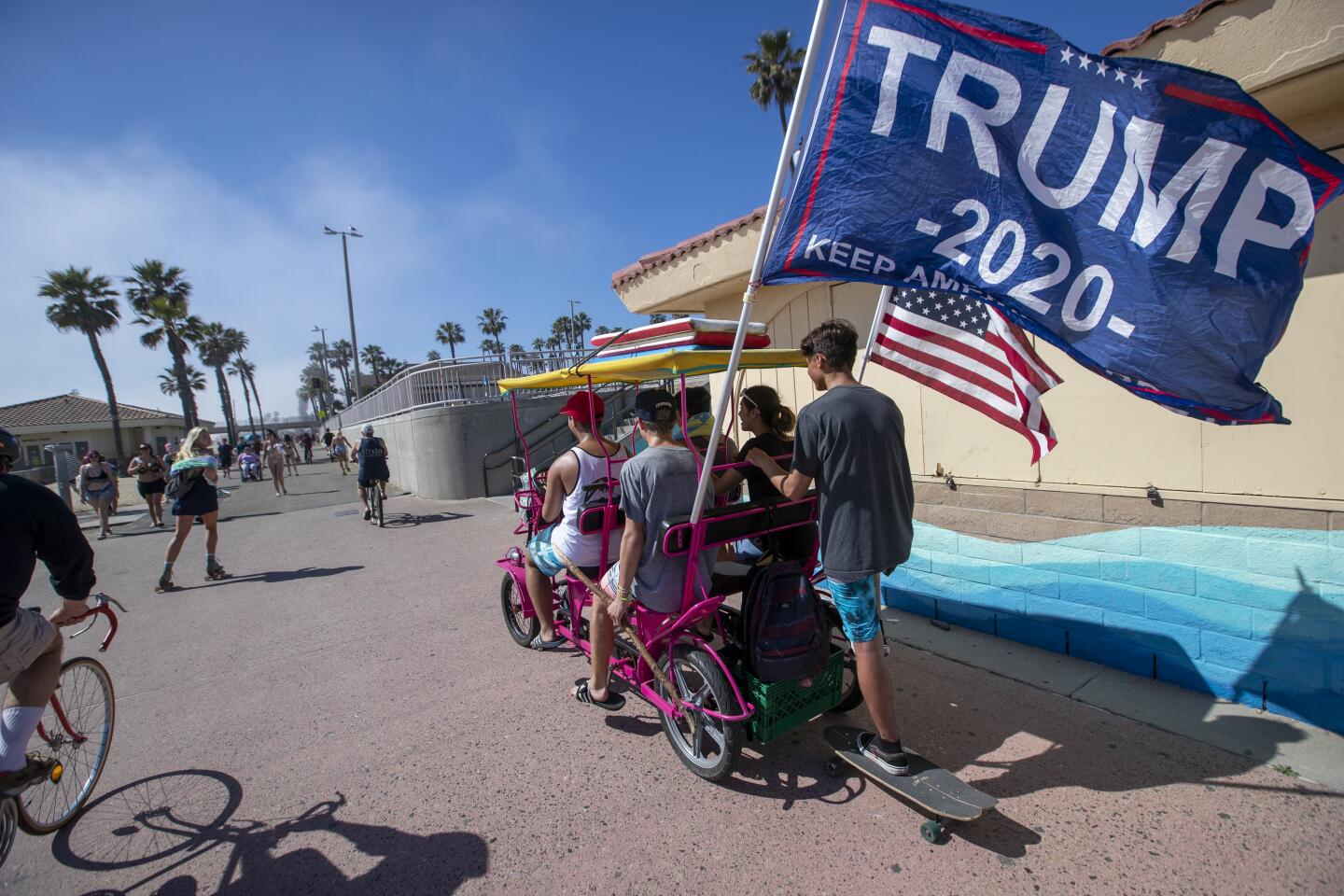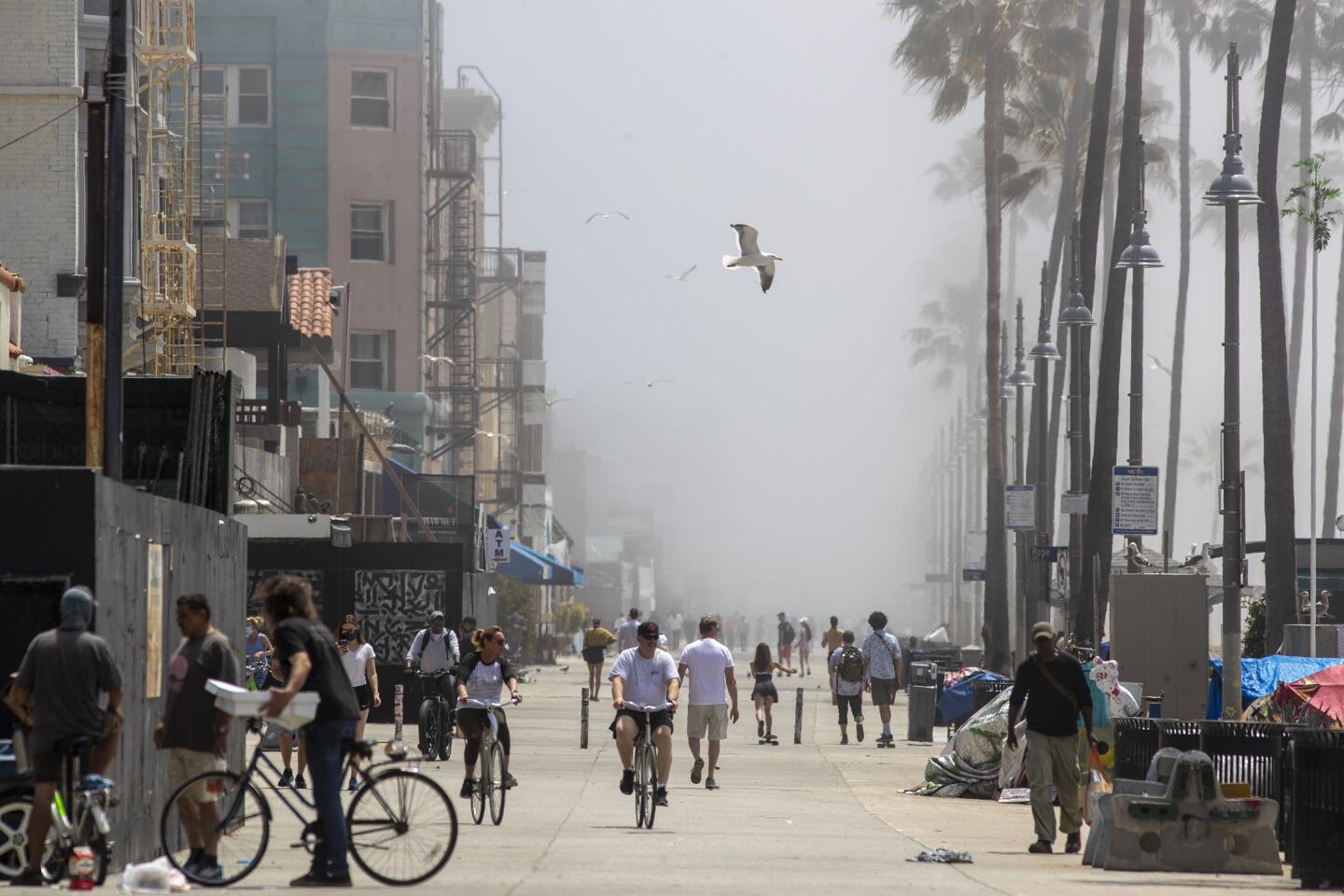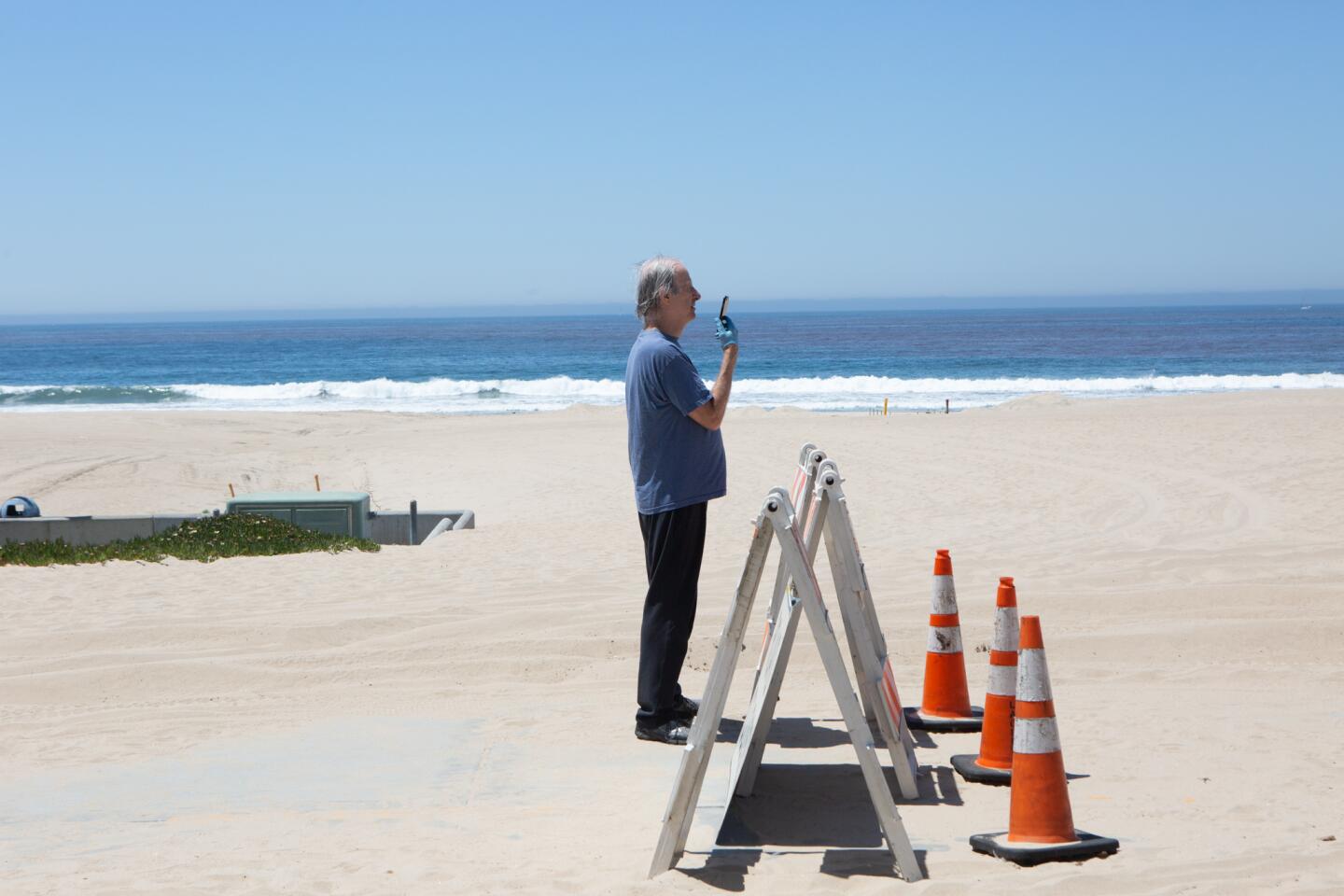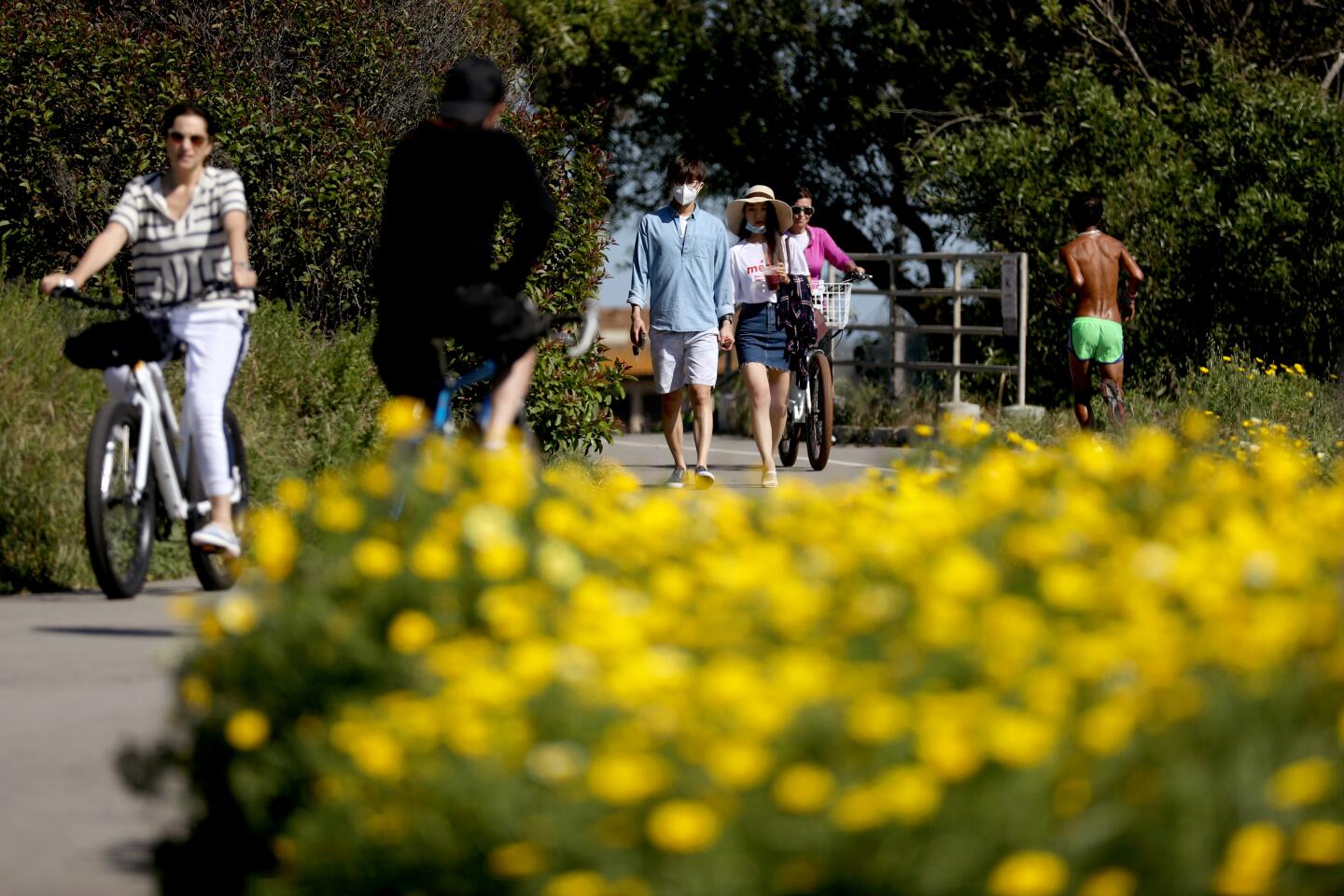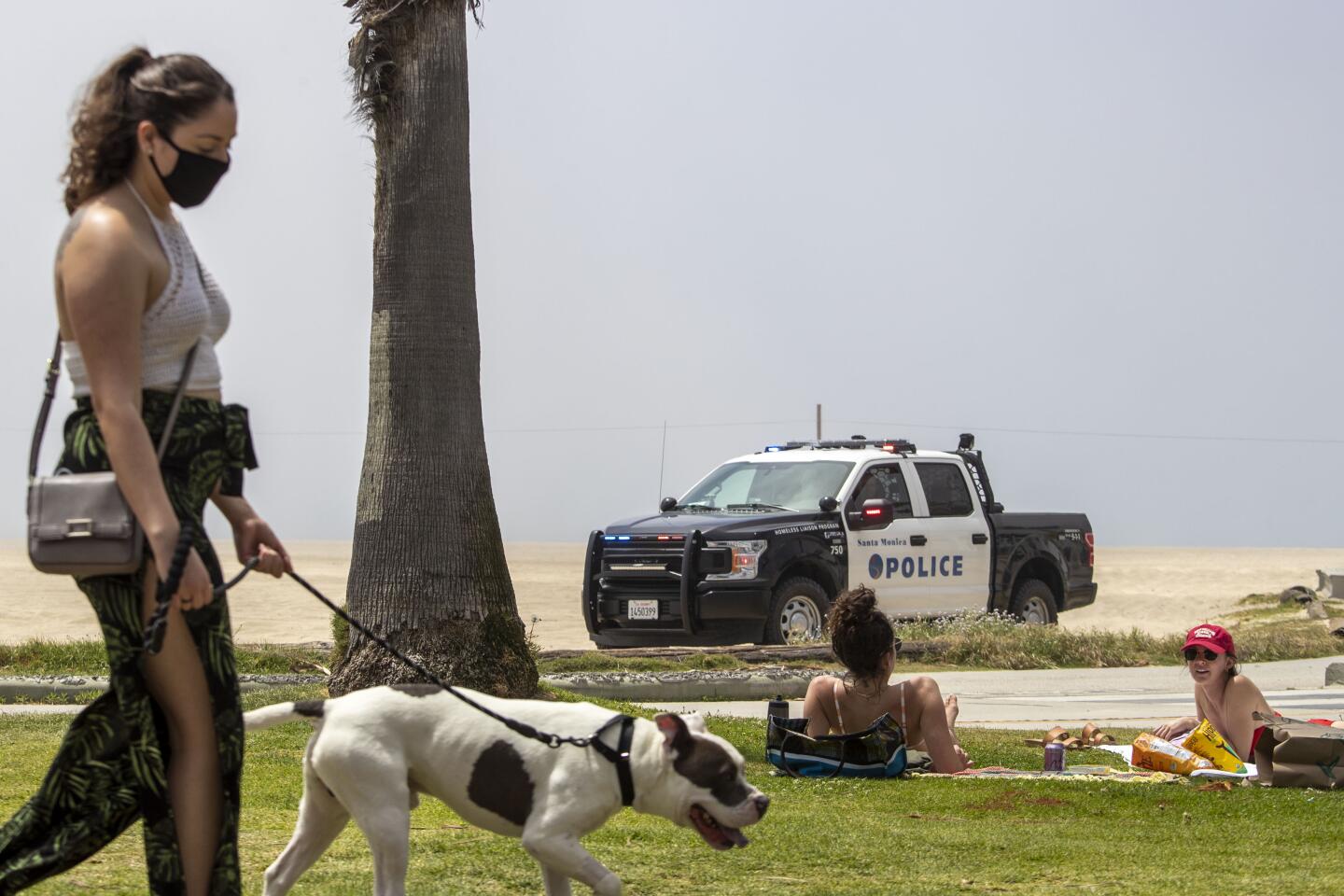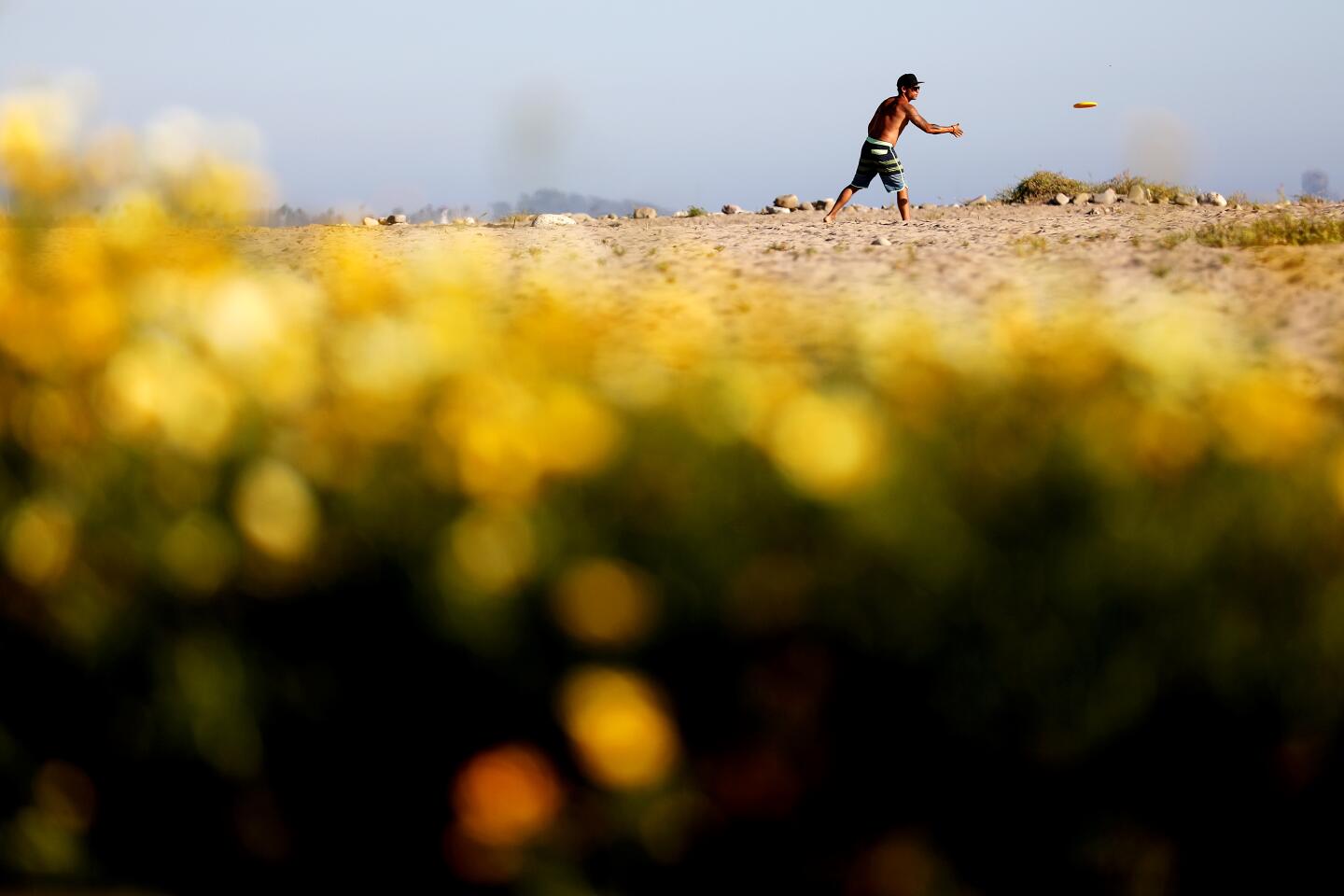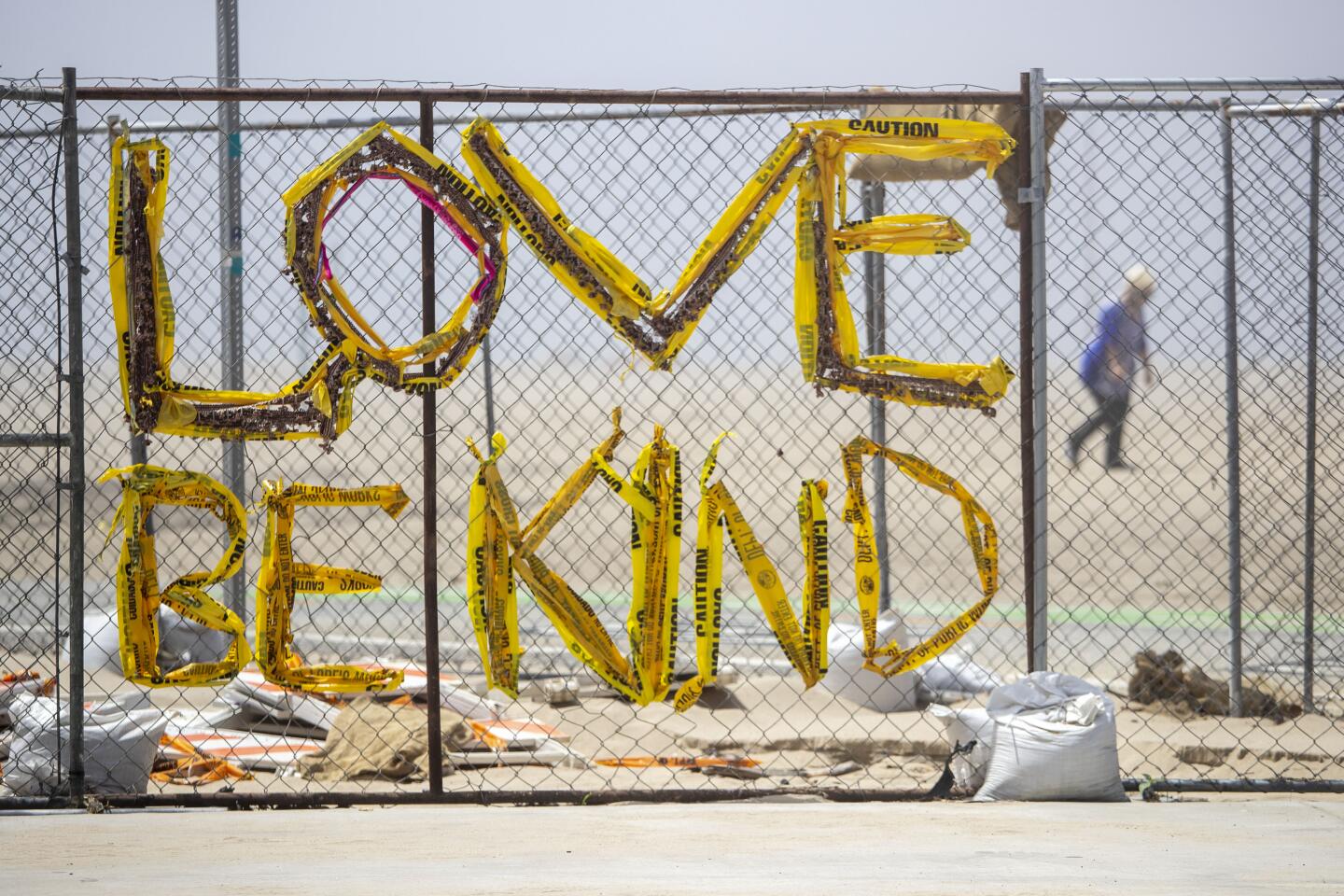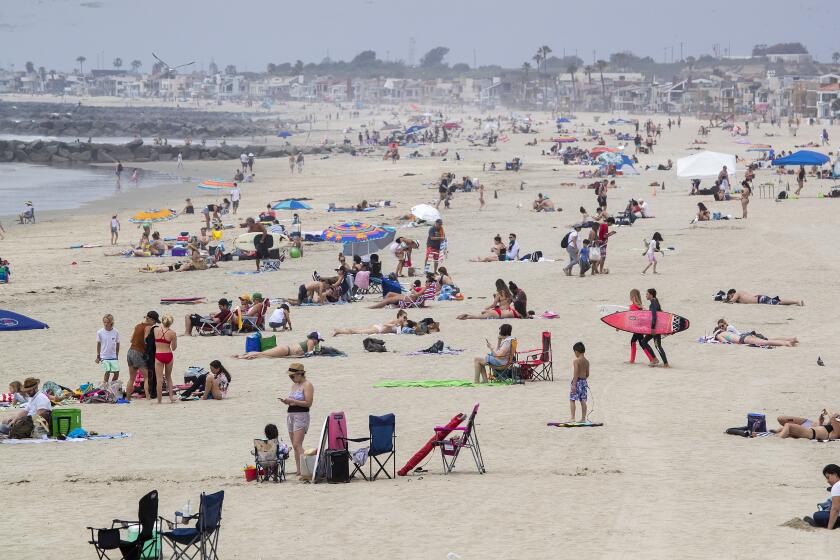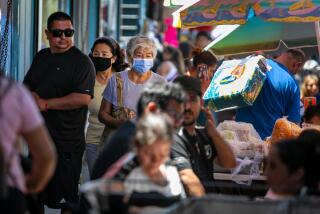Column: Don’t endanger your friends and family. Patience, please, and stay off the beach
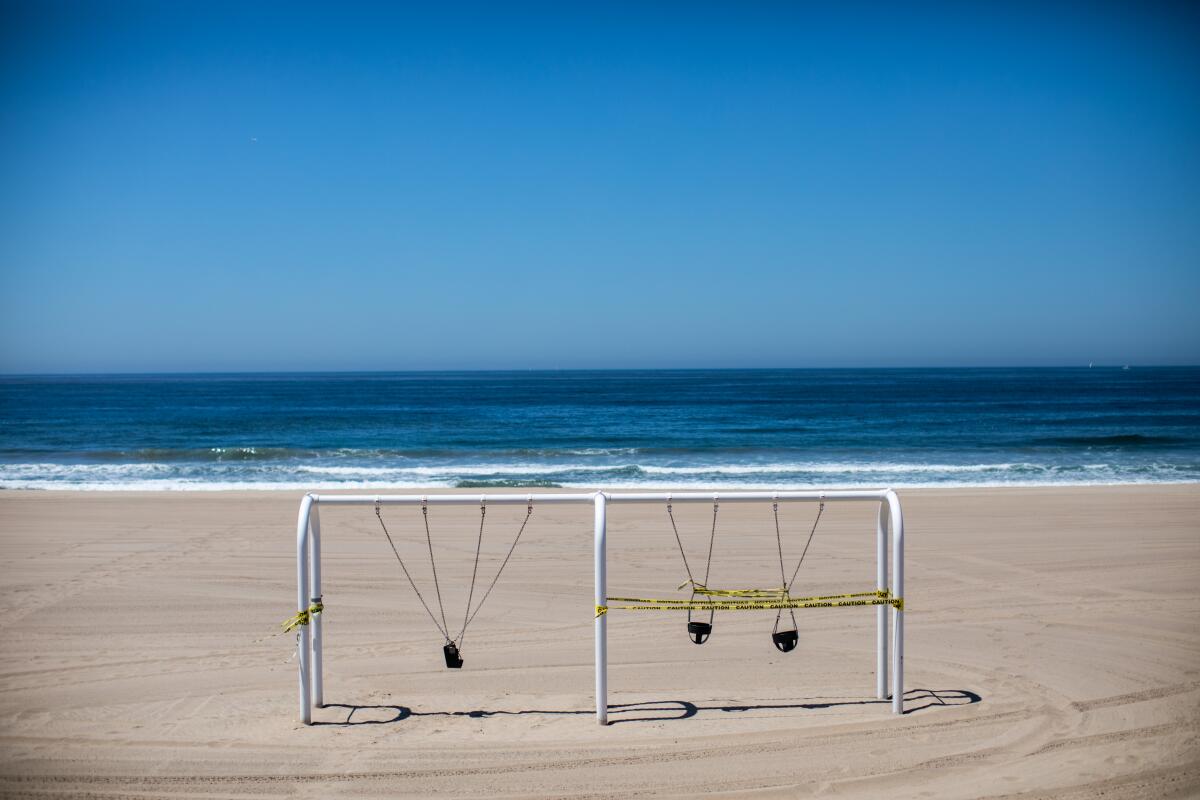
I’ll admit it. I’m going a little stir crazy, and I would love to walk at the ocean’s edge or wade into the surf. I’ve been tempted to go to Ventura or Orange County beaches, where that’s being allowed by local authorities, despite Gov. Gavin Newsom’s call to stay home.
But it would be selfish, irresponsible, dangerous and stupid of me to do so.
And the same applies to everyone else.
Get off the beach already!
Yeah, I know it may be as dangerous to go to a grocery store as it is to catch a wave. But we have to eat. We do not have to hang out on the sand en masse.
In weekend photos and videos from Orange and Ventura county beaches, some people appeared to be attempting to stay isolated. But given the crowds, that wasn’t always possible, and many didn’t even seem to be trying.
What were these nitwits thinking?
And shame on the leaders of those counties for not shutting the beaches and cracking down on violators.
Even Newsom, who led the charge on social distancing, said Tuesday that a gradual, phased return to normal could begin in weeks rather than months. I’ll be watching closely to see how that plays out, because if Newsom opens the gates too soon, we may all regret it.
Yes, we’re all tired of being cooped up. Yes, we’re going a little nuts. Yes we want to return to work and routines as soon as possible, so we can pay our bills, put food on the table, see our friends.
But it’s too soon. In case you haven’t noticed, deaths from the virus in Los Angeles are still coming at an alarming rate.
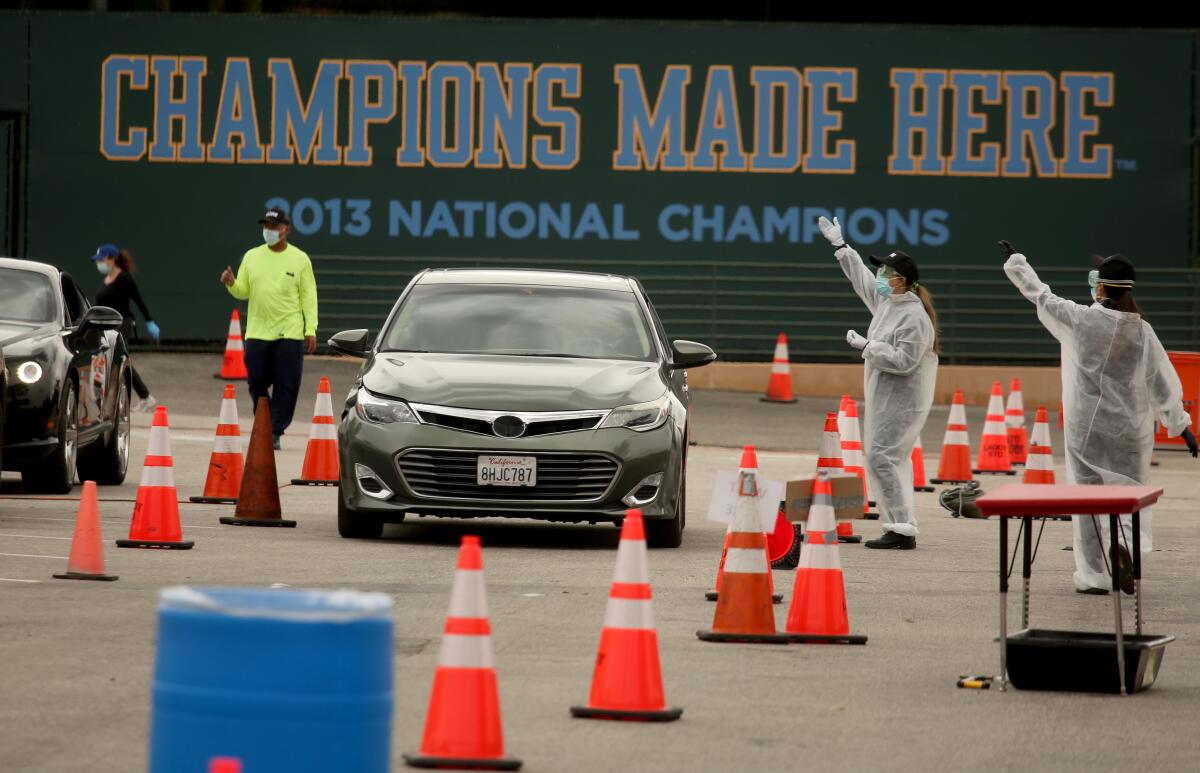
Newsom warned us of a “learning loss” if schools don’t reopen in July or August.
I’m warning you of a life loss if we don’t have basic protections in place first.
Sure, step outside and go for a walk, ride a bike, or run with the dog, as long as you’re wearing a mask and maintaining that six feet of distance.
And at some point, it will make more sense to open some trails and parks, and even beaches, so long as there’s some way to control crowds. But managing the pandemic is like driving. The faster you go, the greater the risk of disaster.
The number of COVID-19 cases in the United States has now surged past 1 million. We’ve exceeded the death toll suffered by the U.S. during the Vietnam War. The curve is flattening, but only because we stayed home. And if we want to fully bend the curve, we have to keep doing that. More activity and mingling means more death, and although most victims are older and have preexisting health conditions, younger people are dying, too, with minorities particularly hard hit.
I know it’s tough for people who own businesses to hear that we need to be a little more patient, and I’ve talked to employers and employees who are suffering.
And that’s certainly a reason we should double or triple the amount of federal stimulus money and streamline the unemployment system.
But normal will put more people at risk.
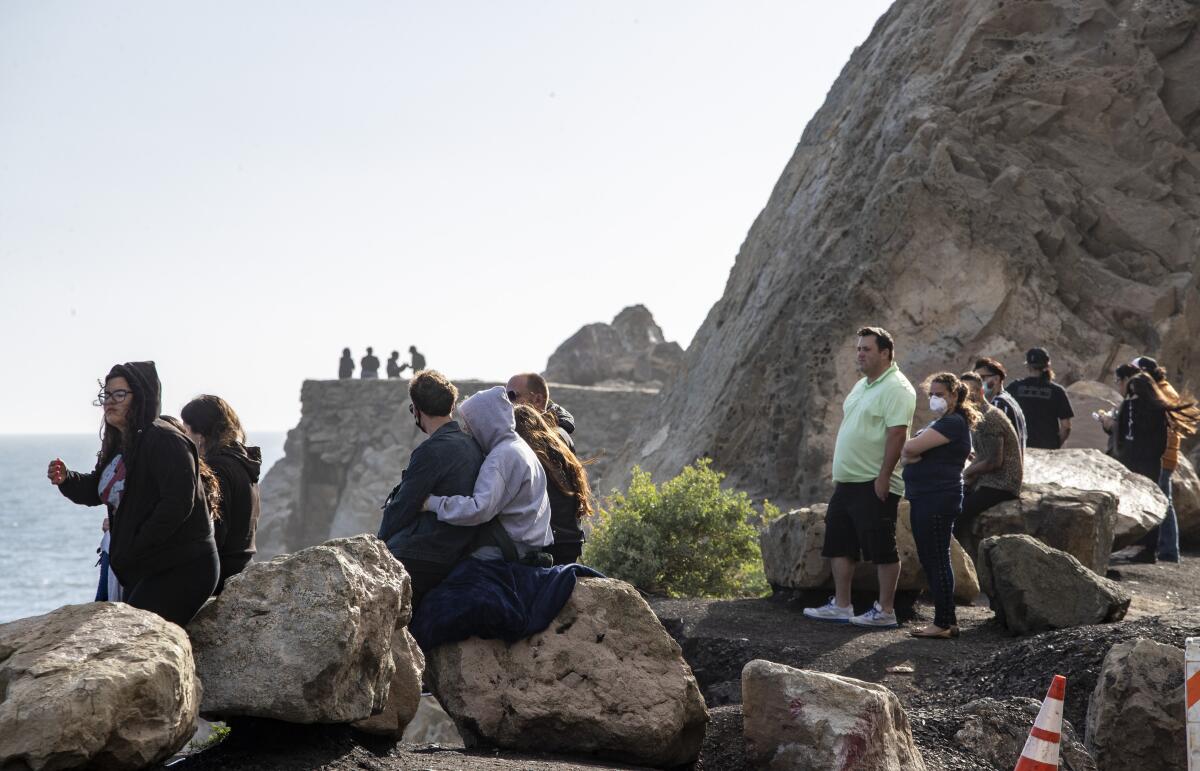
Don’t believe me? Maybe you’ll believe Dr. Anne Rimoin, a UCLA epidemiologist and expert on global health emergencies. “As people begin to” back off the isolation and social distancing now in place,” said Rimoin, “we will see an increase in cases and in deaths.”
It’s as simple as that, Rimoin said. We risk sacrificing the gains we’ve worked so hard to achieve.
There is no vaccine and we don’t know when there will be one, she said. Reliable testing with fast results is not yet widely available, and the supply chain is very much a work in progress. There is no tracing, which would track and curtail the spread of the virus. And there is no proven cure.
Until those things are in place, Rimoin said, we are all at risk, and the virus doesn’t respect the borders between Orange, Los Angeles and Ventura counties or any other borders.
“The virus anywhere in the United States is the virus everywhere in the United States,” she said, meaning that a quick return to normal in states like Florida and Georgia could ultimately harm people in other parts of the country.
There’s still way too little federal and state direction and oversight of pandemic response standards and protocols, which means that different locales are winging it on equipment procurement and policy. As my colleagues Maya Lau and Melody Petersen reported, L.A. County banked on a Silicon Valley testing startup that uses a mouth swab rather than a nasal swab.
Now there are concerns about the accuracy of those tests and the lag time, and County Supervisor Kathryn Barger told me she and others are working on getting more labs up and running.
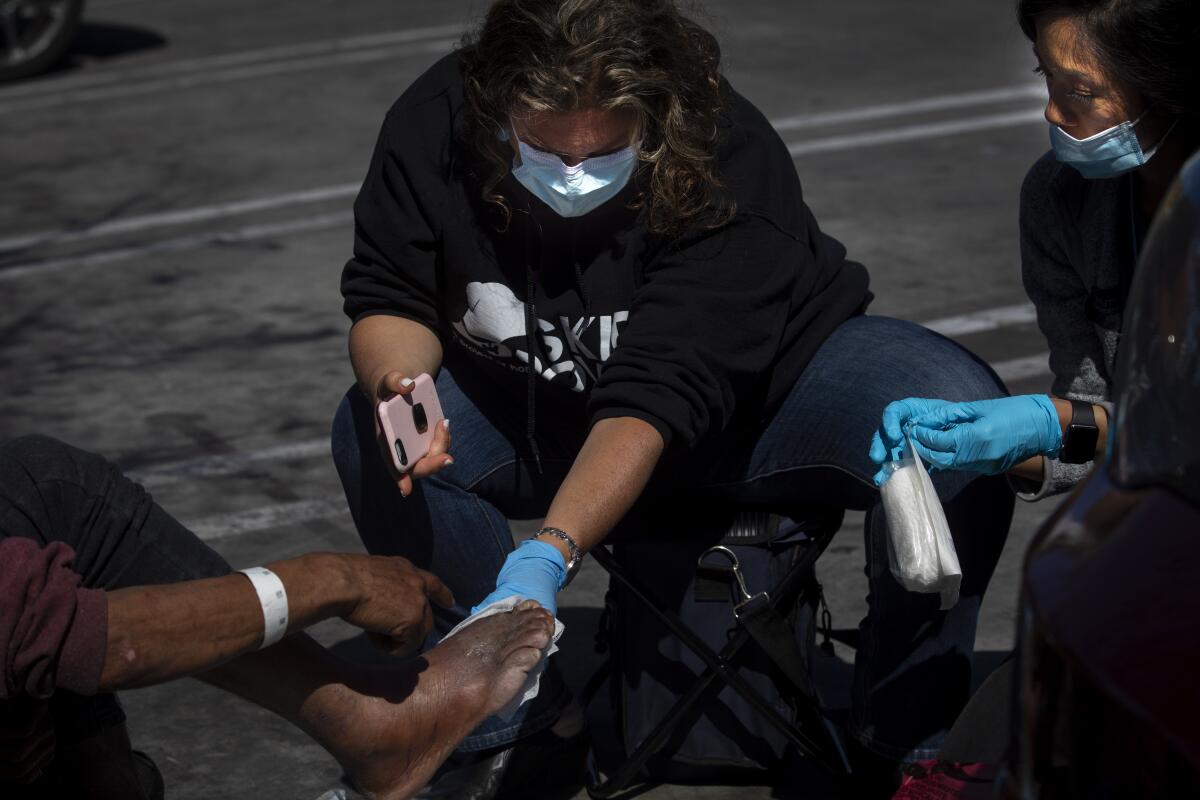
One month ago, I made the rounds with Dr. Susan Partovi, who does homeless street medicine and was warning patients to social distance as much as possible. Last week I learned that she was feeling “viraly,” as she put it. She was tested for COVID-19 at the so-called expedited drive-through testing site near Dodger Stadium.
She was tested a week ago Tuesday with a mouth swab. She didn’t get the results until Monday.
If it takes a week for a front-line doctor to get results, we’re in deep trouble.
Partovi’s test turned out to be negative, and when she felt better, she returned to work. That was the second time she was tested, Partovi told me. The first time, she had her results — also negative — from Kaiser in 48 hours.
Three weeks ago I wrote about three emergency room doctors at Good Samaritan Hospital who were rooming together to avoid exposing their families to COVID-19. One of the three, Andrew Herzik, later got sick, and a week ago, he tested positive for the virus. His results took about 36 hours, and he’s now recuperating at home.
I guess 36 hours isn’t bad, but Partovi told me she has a doctor pal in Pennsylvania who got test results in 45 minutes. So it’s anywhere from one week to 45 minutes, depending, and there are still questions about false negatives.
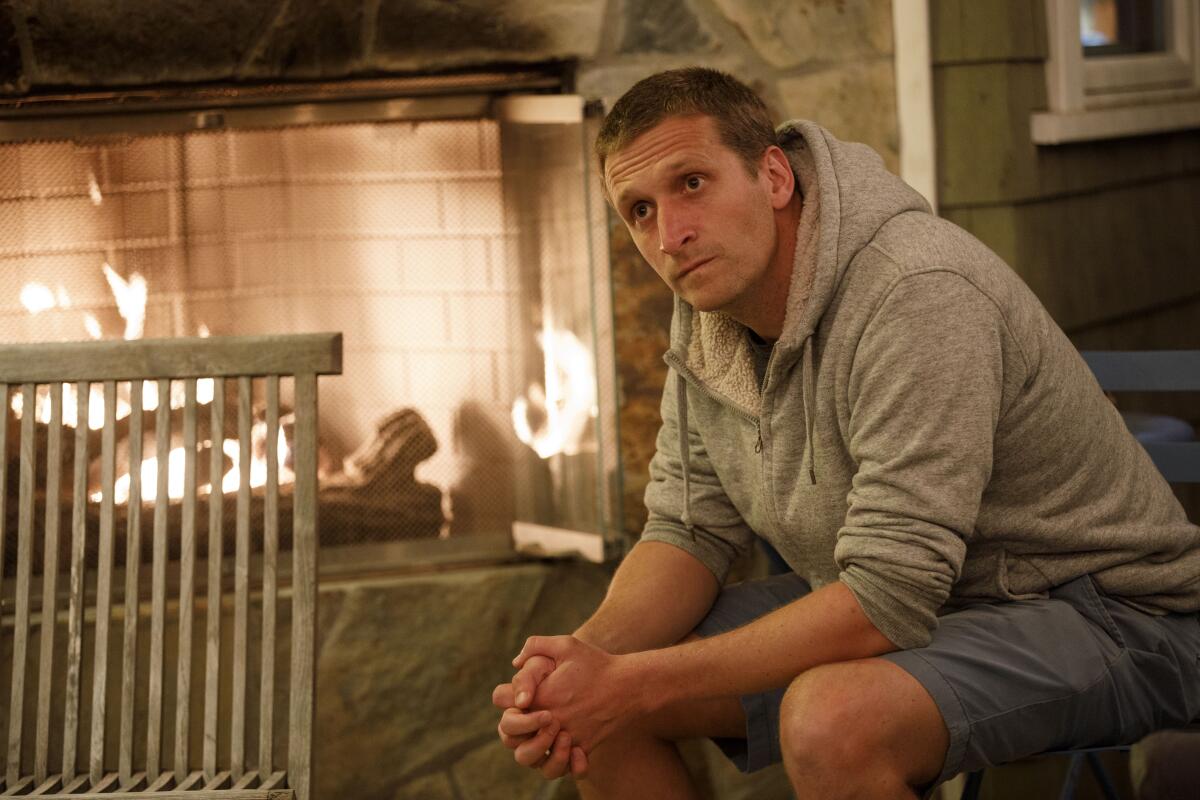
We need better, faster, more reliable tests. That’s especially true because people can be positive for days, and infect others, without having any symptoms.
Only when that’s in place should we start resuming normal routines, beginning with businesses and institutions that require minimal human contact, and expanding only when we’re sure there’s not a new curve ahead of us.
Until then, try to find a little more patience and resolve, stay safe and healthy, and keep off the beach.
Going to the beach is our birthright as native Californians — and our promise to newcomers. It’s our gift from the Creator — a trade-off for all the quakes, wildfires, mudslides and smog.
More to Read
Sign up for Essential California
The most important California stories and recommendations in your inbox every morning.
You may occasionally receive promotional content from the Los Angeles Times.

